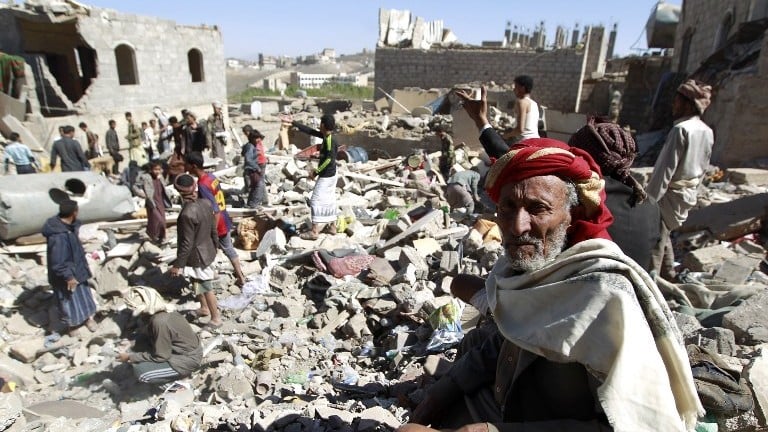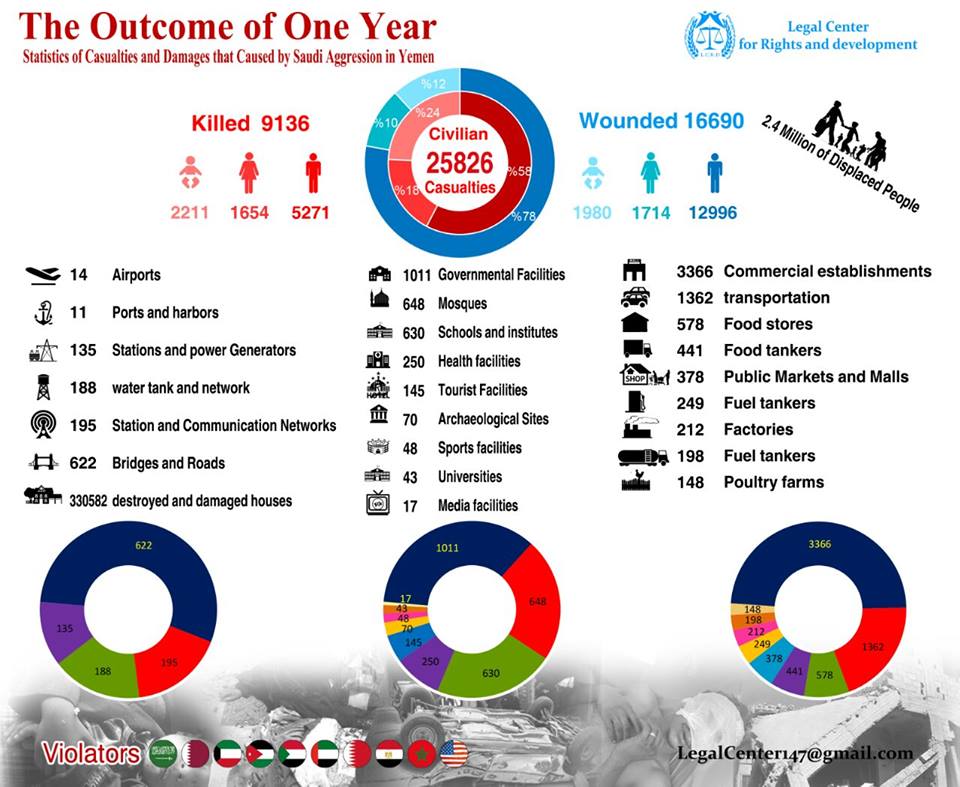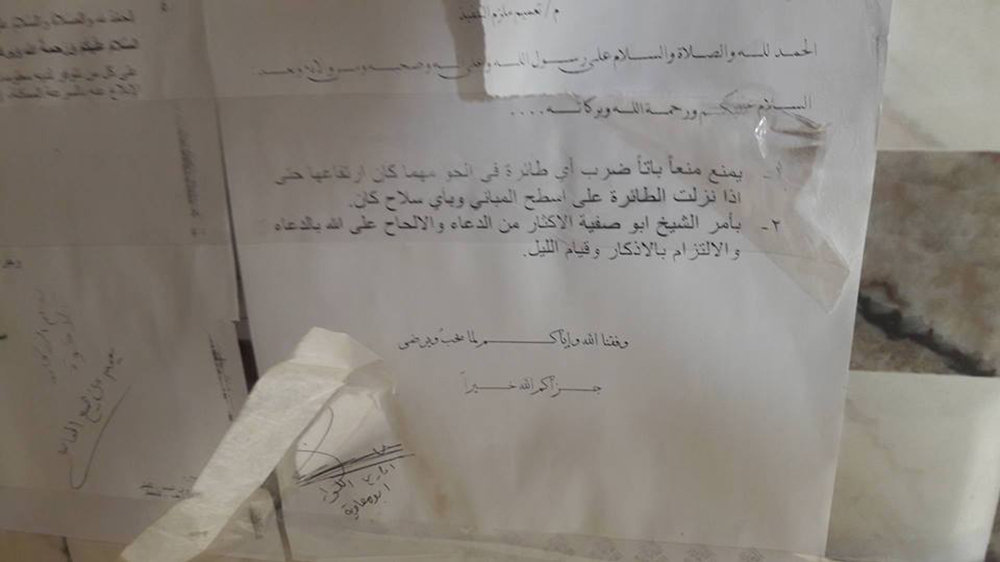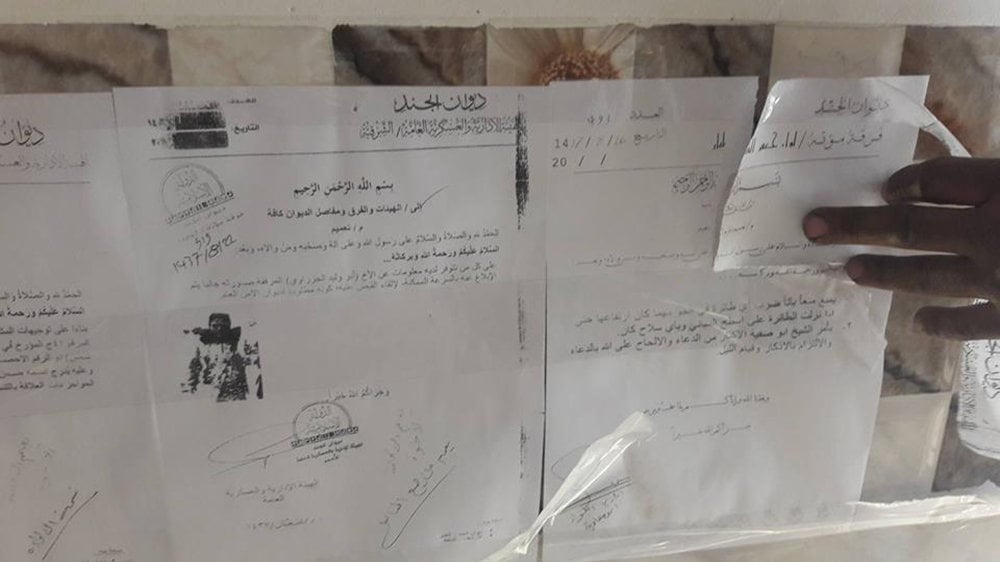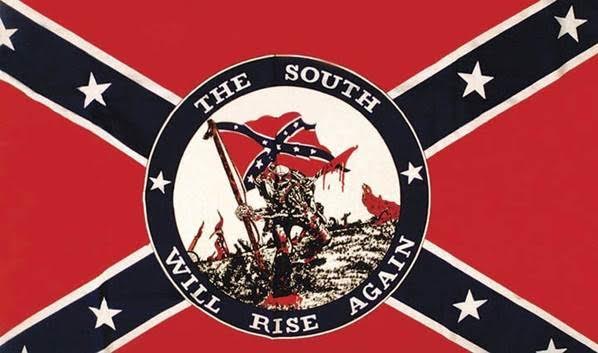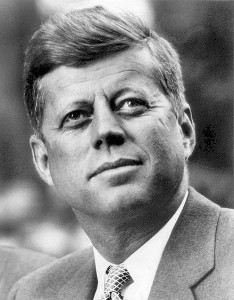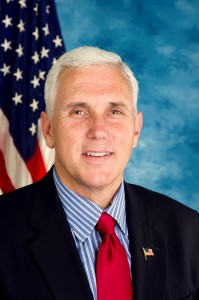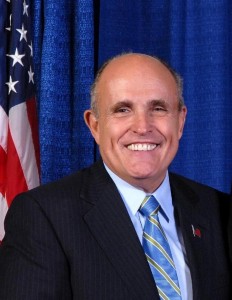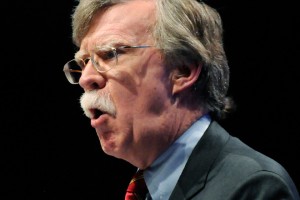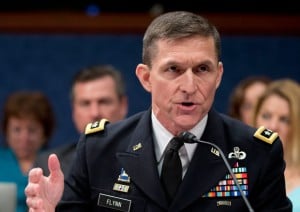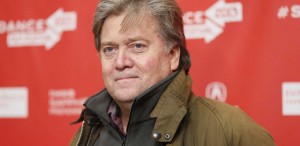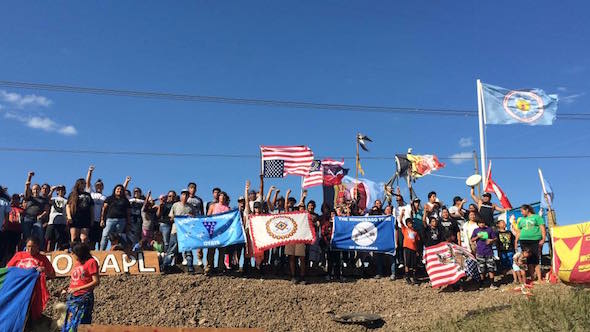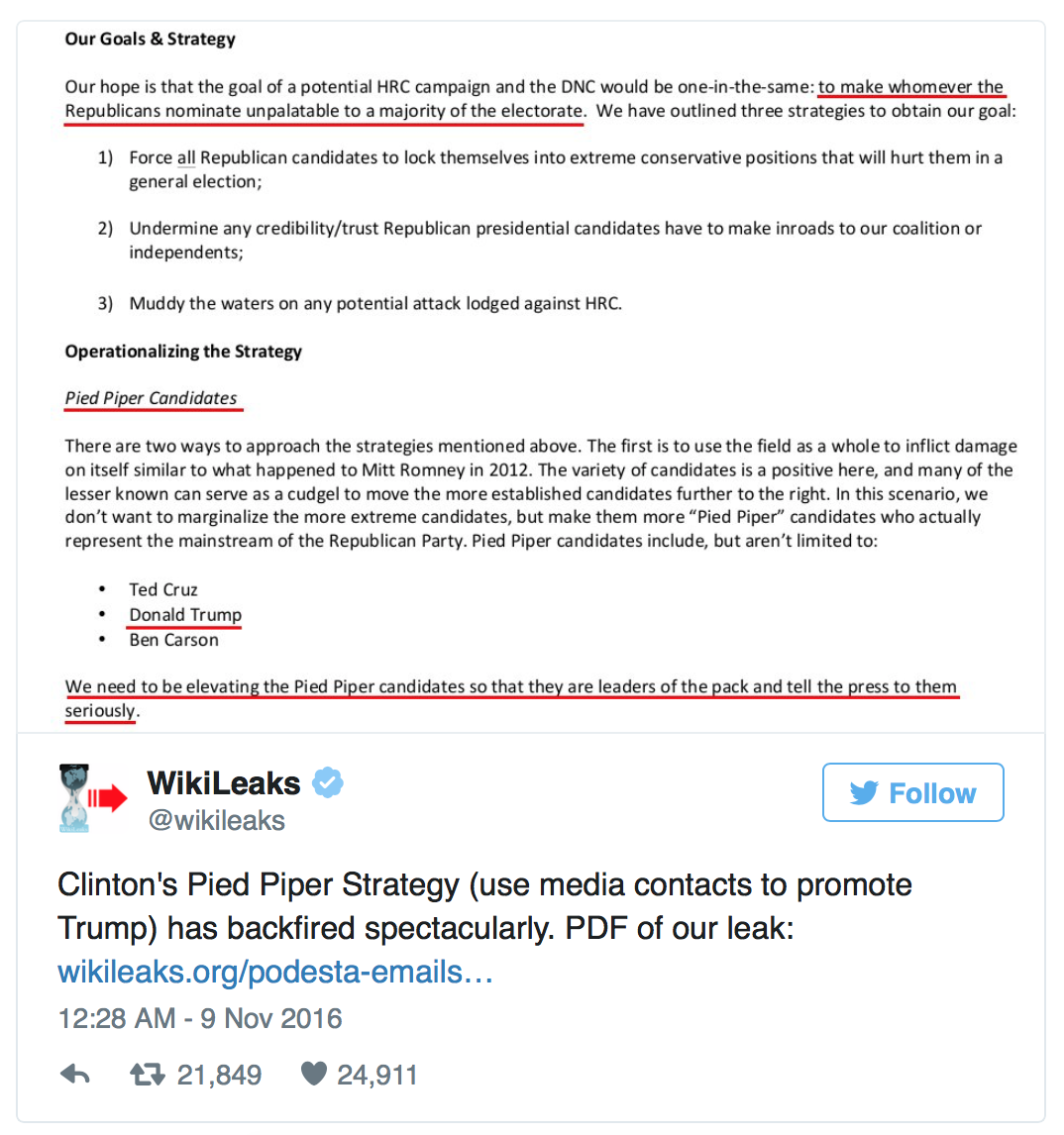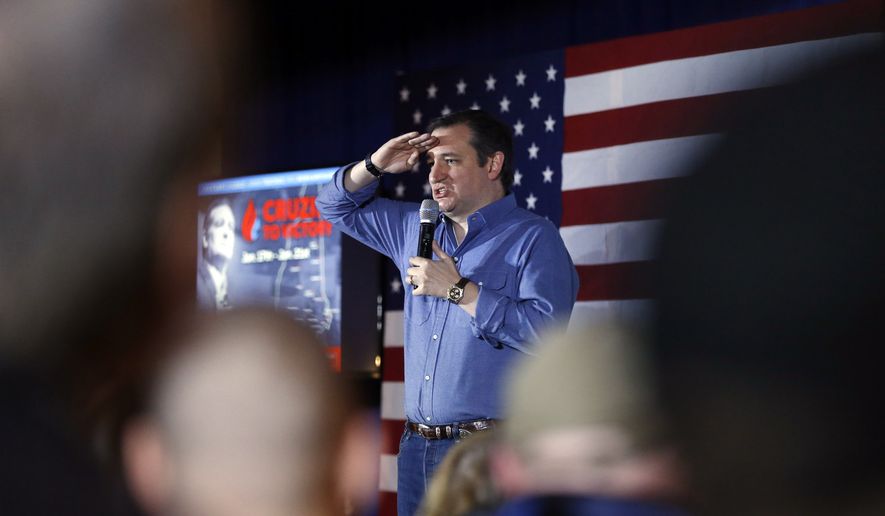On 8 July 2016 it was announced in Seoul that the US would, as had long been anticipated, deploy an initial unit of the Terminal High Altitude Area Defense (THAAD) system in South Korea.1 The announcement was made at a press conference hosted by the South Korean Deputy Minister of Defense Ryu Je-seung and the Chief of Staff of US Forces in Korea (USFK) who has the significant, if unfortunate, name of General Vandal. The decision did not attract much attention in the international media being overshadowed by the Brexit drama in Europe, shootings and electioneering in the US, and Obama’s last NATO summit in Warsaw.

General Thomas Vandal, the Chief of Staff for the US Forces in Korea and South Korea’s Deputy Minister Of Defense Ryu Je-seung announce the decision to deploy the THAAD missile defense system in South Korea, at the Ministry of National Defense in Seoul, July 8. (Yonhap News)
The limited coverage however was definitely ‘on message’:
- US and South Korea agree THAAD missile defence deployment (BBC)2
- South Korea and US agree to deploy THAAD missile defence system (Guardian)3
- Pentagon to deploy anti-missile system in South Korea (Washington Post)4
- South Korea and US Agree to Deploy Missile Defense System (New York Times)5
It was Reuters which delivered the whole message in the headline:
South Korea, US Agree to Deploy THAAD Missile Defense to Counter North Korea Threat6
So, the message goes, we have two equal allies–South Korea and the US (and that is often the order in which they are given) –who after much deliberation are stationing this segment of Missile Defense precisely to defend South Korea against a belligerent North Korea. It must be admitted that China7 and Russia8 are making a bit of a fuss although it has been patiently explained many times that the sole purpose of THAAD was, as Minister Yoo reiterated at the press conference “to guarantee the security of [South Korea] and its people from the threat of North Korea’s nuclear weapons, weapons of mass destruction and ballistic missiles” and is “not aimed at a third country”9. Indeed, Jane Perlez suggested in the New York Times, China was peeved because the deployment show that despite its attempts to woo Seoul ‘Ms. Park’s government showed that it was embracing its alliance with Washington more than ever, and that it would rely less on China to keep North Korea and its nuclear arsenal at bay.’10
However, a little burrowing beneath the surface reveals that the reality is very different from the official US and South Korean government line so assiduously reported by the media.
There are, for a start, serious doubts amongst experts that THAAD would in fact be effective against North Korean missiles. Even those in the military-industrial-security complex such as Michael Elleman formerly of the US Department of Defense and now with the International Institute for Strategic Studies (IISS) who is, by profession, ‘pro-THAAD’ cautions that it would not offer complete protection.
Adding THAAD to missile-defense deployments that already include Patriot systems would likely substantially enhance South Korea’s capacity to minimize the damage caused by a large North Korean missile attack. However, it is important to note that a layered defense will not be able to completely block such an attack. As a result, missiles armed with nuclear weapons could cause significant casualties as well as damage in the South.11
A similar point is made by Garth McLennan, who refers to the technique of haystacking where a large number of missiles are fired, only a few of which have nuclear warheads (because they are in short supply). The nuclear component then becomes a needle in a haystack:
THAAD would not, however, serve as an effective tool in countering a North Korean nuclear strike if such an attack were haystacked among a barrage of conventional warheads.12
A more trenchant, and independent critic, is Theodore Postol, emeritus professor at the Massachusetts Institute of Technology (MIT) who is frequently cited by the liberal Seoul newspaper Hankyoreh.13 Postol argues that North Korea could make its missiles tumble or fragment in flight in order to confuse THAAD and hence penetrate defences.14
There appears to be a consensus amongst experts that despite claims by the South Korean Defense Minister a single THAAD unit would be ineffective against Submarine Launched Ballistic Missiles (SLBMS) because it only has a 120 degrees azimuth, or window, and since SLBMs can be launched from any direction it would be necessary to have at least three to cover the whole 360 degrees.15

THAAD on the Korean peninsula, used for detecting Chinese ICBM (hypothetical)16
Then there is the question of where the THAAD unit would be stationed. The right wing Chosun Ilbo has expressed concern that it would be positioned to protect US bases, rather than Seoul.17
Postol concludes, in a lengthy technical presentation given at Harvard, that “The claim that the US is aiming its missile defense at North Korea is simply nonsense.”18
If THAAD offers little or no protection against North Korea’s missiles, why the deployment? The answer lies in THAAD’s AN/TPY-2 radar system which can penetrate deep into China, and Russia.19 Postol explains:
The Chinese are concerned about the THAAD radar because it was designed from its beginning to provide cuing information to the US National Missile Defense. The placement of a THAAD radar in South Korea has the unambiguous technical appearance of placing the radar in a location where it can provide track information on Chinese ICBMs before they rise over the curved earth-horizon and can be seen by the main radars of the US National Missile Defense in Alaska…
South Korea will get no military benefit from the THAAD defense system, and China will consider the radar‘s deployment to South Korea as a hostile act by South Korea against China. It therefore has a significant negative impact on South Korean/Chinese relations, with essentially no real benefit to South Korea.20
Russia has warned that it ‘could deploy missile bases to its Far East region that would be within reach of THAAD bases in South Korea’.21
China has gone further in an editorial in the authoritative Communist Party newspaper Global Times, which outlined a number of measures in response to the THAAD deployment:
We recommend China to take the following countermeasures.
- China should cut off economic ties with companies involved with the system and ban their products from entering the Chinese market.
- It could also implement sanctions on politicians who advocated the deployment, ban their entry into China as well as their family business.
- In addition, the Chinese military could come up with a solution that minimizes the threat posed by the system, such as technical disturbances and targeting missiles toward the THAAD system.
- Meanwhile, China should also re-evaluate the long-term impact in Northeast Asia of the sanctions on North Korea, concerning the link between the sanctions and the imbalance after the THAAD system is deployed.
- China can also consider the possibility of joint actions with Russia with countermeasures. 22
The enormous implications of these measures are obvious. For one thing it seems likely that the deployment, combined with US containment of China in the South China Sea, will reinforce Chinese rethinking of its conciliatory policy over the Korean issue.
In South Korea there have been serious concerns raised about the commercial impact of the response from China, its major economic partner. The Korea Times, in an article entitled ‘Businesses fear backlash from China’ reported:
Company officials and analysts expressed concern that THAAD may stoke anti-Korean sentiment in the neighboring country.
They also said business ties with China could worsen, heightening uncertainties about the Korean economy.
“The THAAD issue is more about politics and diplomacy, but it could hurt Chinese consumer sentiment about Korean products,” Hyundai Securities analyst Kwak Byeong-yeol said.
Company officials expressed worries over retaliatory actions such as higher tariffs and stricter rules on some Korean products manufactured in China.23
South Korean companies exporting to, or producing in China, would not be the only casualties. There is also tourism. The Hankyoreh noted that
What the South Korean government and business are most concerned about in connection with the THAAD debate are economic sanctions. China is by far South Korea’s number one export market, accounting for 26% of exports as of 2015 – a figure that rises to 31.8% if Hong Kong (5.8%) is included.
Last year, 45% (6 million) of foreign visitors to South Korea were Chinese, and they are lavish consumers, spending five times more than the average foreign tourist’s expenditures (US$400). Chinese investors hold 17.5 trillion won (US$15.22 billion, 18.1%) in government bonds and other publicly traded securities in South Korea, more than any other country. Furthermore, around 23,000 South Korean companies were doing business in China as of 2013. Sanctions from China would deliver a body blow to the South Korean economy.24
So we have a situation where the South Korea government has, it claims, willingly agreed to the deployment of a weapon system which will afford it little or no protection against North Korea, but will exacerbate North-South tensions which are already at highest level in decades.25 THAAD will inevitably increase the danger of South Korea being a target of Chinese and Russia counterattack in the case of war.26 And in the meanwhile it is producing the likelihood of substantial damage to the South Korean economy as the relationship with China and Russia sours.27
The United States is inflaming the situation on the Korean peninsula, and worldwide. THAAD is clearly one part of a larger pattern. Obama at the NATO summit in Warsaw 8 July confirmed ‘Russia as implacable enemy No. 1, while Defense Secretary Carter’s recent campaign to up the military ante in the western Pacific casts China as a close No. 2.’28 At the same time Abe Shinzo, with another electoral victory under his belt continues his inexorable journey towards revision or ‘reinterpretation’ of the Japanese ‘peace constitution’ and the remilitarisation of Japan. 29 How do we explain the hysteria and the war-mongering? And, in the case of South Korea, the self-harm?

Choi Sun-sil depicted as a Shaman
A framework for analysis with the US at its core
In order to make sense of this and, lay the foundation for activism, as appropriate, we must contextualise and establish a framework for analysis. The starting point for this framework is that we must look in the right direction. Most writing and discussion on Korean peninsula issues focuses almost exclusively on North Korea. We are told of the North Korea problem, the North Korea threat, how North Korea, or the Kim family, is mad, bad, unpredictable, and so forth. The clue is to look at phrases such as the “Vietnam War”, the “Korean War”, “invasion of Afghanistan”, “invasion of Iraq”, and work out what they have in common; or rather what is left out that they have in common. The answer of course is the United States. The US is the common denominator.
No doubt some wise person thousands of years ago pointed out that we will not see the mountain, however high it may be, if we are looking in the wrong direction. And the American mountain is very high indeed. The US is the global colossus. It is the world’s major economy (although now overtaken in Purchasing Power Parity (PPP) terms by China) and one relevant consequence of that has been its fondness for economic warfare. Physical sanctions may devastate a target economy without impinging on the far larger American one. The US had an embargo against China for 25 years without American business protesting; mind you they didn’t realise what they were missing out on. Sanctions on North Korea have been in place for some 70 years, with no apparent protest from American business. The US dominance in the international business and banking architecture makes financial sanctions very appealing; again they cause great damage without much cost to the US. 30American economic might means there is plenty of cash to buy friends and influence people. General David Petraeus claimed that ‘money is my most important ammunition in this [Iraq] war’ and this insight led to a US Army manual entitled Commander’s Guide to Money as a Weapons System.31 Vicky Nuland’s boast, in December 2013, just before the coup in the Ukraine, that they had ‘invested’ $5 billion in the Ukraine is one example; then there are all the stories of CIA operatives sashaying through Afghanistan and Iraq with dollars, not in fistfuls but in suitcases. 32
The US is uniquely blessed by nature, with extensive agricultural and mineral resources meaning it cannot be blockaded into submission, however strong a future enemy might be. It is protected by vast oceans east and west and bordered by small, non-threatening countries north and south and surrounded by a huge network of overseas bases.33 Despite this geographical invulnerability, the US spends on its military nearly as much as the rest of the world put together. If one adds to its military budget that of its ‘allies’ and compares that to the military wherewithal of potential adversaries the disproportion is staggering. At a rough calculation using data from the latest Military Balance assessment from the International Institute for Strategic Studies, the military expenditure of US and its ‘allies’ is about $1 trillion a year. 34They outspend China seven times, Russia 15 times and North Korea somewhere between 100 times and, if one accepts the estimate of Pyongyang’s military budget made by the director of the South Korean Defence Intelligence Agency back in 2013, 1000 times.35
The United States also has immense Soft Power which includes diplomatic power and its domination of the global intellectual space which are linked together, the one feeding off the other.
The US has immense diplomatic power. Hence for instance all those dubious UN Security Council resolutions censuring North Korea, and violating the sovereignty of Libya, Yugoslavia, Iraq, or Iran.36 The US is able to bully, cajole or perhaps just instruct permanent and non-permanent members of the UNSC to commit egregious violations of the UN Charter, damaging its enemies and protecting its friends, such as Israel, Turkey, and Saudi Arabia, and of course itself. Again its power is not absolute, but it is extraordinary.
The official US narrative not merely fashions Western media and academia but also much of that in Russia and China. If you look at Russian or Chinese media, in English at least, you will see that unless national interests are directly challenged – in Ukraine and Eastern Europe for the Russians and the South China Sea for the Chinese, the default position is to accept uncritically what the Western news agencies, and hence Western officials, portray. This, needless to say, only works one way. No Western newspaper would ever regurgitate a statement from Tass or Xinhua without inserting it in a political envelope telling the reader not to believe it.
As a result of this domination of the international intellectual space no one seems to blink when the US, with its thousand nuclear tests, fulminates against North Korea’s five, or with its myriad nuclear and conventional missiles, bombers, fighters, aircraft carriers, and submarines claims that it is being threatened by North Korea with its very limited and uncertain ability to project power far beyond its borders. This goes beyond hypocrisy and double standards into the construction of a special sort of unreality.
Of all countries in the world North Korea alone has been censured by the UNSC for launching satellites, and that on the strange ground that they utilised ballistic missile technology. Strange because not merely are all satellites launched by ballistic rockets, but ballistic missiles are not themselves illegal.37 How could they be when the US has so many of them?
There are various bilateral and multilateral agreements by which the US attempts to fortify its hegemony by managing the utilisation of missiles by other countries – there is, for instance, the limitation it has imposed on South Korean missiles (they don’t want Seoul attacking China without permission) but missiles per se are not prohibited Similarly for nuclear tests and weapons. There are various ‘voluntary’ agreements – the Comprehensive Nuclear-Test-Ban Treaty and the Non-Proliferation Treaty – but these are different in nature from, for instance, the prohibition on invading other countries which is enshrined in the United Nations Charter, and dates back to the Treaty of Westphalia in 1648.38 In this regard the construction of North Korea as an international pariah is an expression of American power rather than, as is usually claimed, a result of the infringement of international law. In fact, the discriminatory charges against North Korea are themselves a violation of the norms of international law and the equal sovereignty of states.
American power means that nothing much happens in the world without the US being involved although that is frequently hidden. Sometimes it is the dominant actor, sometimes just an endorser, but the US is always there. This does not mean that the US is omnipotent. Indeed it is intriguing the way that clients sometimes have surprising leverage against the US One thinks of Syngman Rhee in South Korea the 1950s, or more recently Hamid Karzai in Afghanistan. These are people who were installed by the US, had not much popular support and many domestic enemies, but nevertheless at times could disobey orders quite flagrantly. The client/master relationship is constantly being negotiated and is complex. However, if push comes to shove the master prevails, as Rhee found out in 1960.
Deciphering US global strategy
So, in analysing world affairs the starting point must be the US What does America want? That, needless to say, often bears little connection with what it proclaims as its objective. Analysis must be hard-nosed looking beyond the spin and rhetoric, focussing on actions and seeking real explanations. When we have some idea of America’s position we can start looking at the other players, in descending order of importance. For most countries, most of the time, the United States is their major strategic partner-cum-adversary. They tend to tailor their policy in relation to third countries in the light of their political relationship with the United States. However for many countries, and South Korea is by no means alone, there is the dilemma of reconciling the economic importance of China with the relationship with the US.39 At the same time we must presume that Washington has a global grand strategy (however incoherent and subject to various factions that may be) and that this strategy prioritises and subordinates the part to the whole.

US Vice President Joe Biden clasps hands with President Park Geun-hye at the Blue House before Biden signs the visitor’s book, Dec. 6. (Blue House photo pool)40
The failure to put the US at the core of geopolitical analysis is a fundamental reason why so much writing on the Korean peninsula is usually off the mark. We have innumerable websites and NGOs, books and articles focusing on North Korea, often with little attention paid to the US, other than considering what effect North Korea, and often ‘the North Korean threat’ has on America. Looking in the wrong direction, asking the wrong questions, they get misleading or meaningless answers. Associated with this, and arguably a result of it, is the fact that virtually all the experts, all the pundits we hear from are, to use Perry Anderson’s term ‘state functionaries’. 41He was talking about American experts on China but the same term can be applied to American experts on Korea, and much the same holds for experts from Britain, Russia, and China. Most of these experts either currently work for the US government or have in the past – in the CIA, Defence, or State usually. If they are former employees they now work for think tanks or NGOs which are, to put it politely, state-aligned. Even academics are constrained by the desire for research funding. There are very few neutral, dispassionate, disinterested (in the proper meaning of the term) voices. One simpler indicator is that virtually all of them express horror at the idea of North Korea having nuclear weapons but few have any qualms about the US and its arsenal. They tend to view the prospect of the US attacking North Korea with moral equanimity. There are, of course, honourable exceptions. Donald Gregg, former CIA operative and George H. Bush’s ambassador to South Korea has become a leading advocate of engagement, as well as offering a critical perspective on US policy.42 James Hoare, the British diplomat (and Korean scholar) who opened the British mission in Pyongyang.43 Robert Carlin, with a background in the CIA and State Department, who offers such interesting insights into US negotiations with North Korea.44
The Korean peninsula in US strategy
Why is the US interested in the Korean peninsula? The answer is location. Korea is the most valuable piece of geopolitical real estate in the world. It is the nexus where most of the great powers meet and contend. China and Russia share a land border with Korea, Japan is separated by a small sea, and although the Pacific is a large ocean it is also ‘the American lake’. None of these powers want a unified Korea subservient to any of the others and since the US is by far the most powerful it has the most pro-active policy. The US is also different in that it alone, at the moment, has aspirations for global hegemony. This means keeping Japan subservient, and containing China and Russia with the longer term aim of fragmenting them so that they are no longer competitors. It is easy to see how Korea fits in with these strategic objectives. As a physical location it provides bases adjacent to China and Russia and whilst the number of troops permanently deployed in South Korea is small, one of the functions of the joint exercises with the ROK is to practice the rapid influx of massive reinforcements. Japan fulfils the same role.
As an aside it might be noted that Korea also provides a base for keeping an eye on Japan. Whilst the US has been an enthusiastic supporter of Japanese remilitarisation, thinking in terms of the containment of China, it is possible this may change. A remilitarised Japan (and it should be remembered that Japan has the expertise to rapidly develop nuclear weapons and delivery systems that might well be superior to China’s), made a ‘normal’ country again, may want to assert its independence from the US. As Palmerston remarked, back in the nineteenth century, countries don’t have perpetual friends and enemies, merely perpetual interests.45
In the meantime Japan remains America’s main asset in East Asia and an important aspect of the US presence in the southern part of the Korean peninsula, dating from 1945, is its function as a bulwark protecting Japan from any military threat from the Asian mainland. In 1945 that meant the Soviet Union but as time passed China has been perceived as the bigger threat. However the military facet is less important than the political one. The US has to be concerned that Japan does not become too friendly with its Asian neighbours, South Korea and Taiwan being obvious, but ultimately perhaps partial, exceptions. This concern was well illustrated by the ‘Dulles Warning’ of 1956 when Secretary of State John Foster Dulles, alarmed at peace treaty negotiations between Japan and the Soviet Union, threatened that the US would not relinquish Okinawa if Japan went ahead by agreeing to a Soviet proposal for a compromise solution to the territorial dispute (Kurils/Northern Territories) between the two countries. Dulles was also worried that if Japan concluded a peace treaty with the Soviet Union this might lead to a normalisation of relations with China.46 Dulles got his way and relations between Japan and Russia are still bedevilled by territorial disputes, as are Japan’s relations with China.47 Fears that Prime Minister Koizumi’s visit to Pyongyang in 2002 might lead to a rapprochement with North Korea may have been the trigger that led to the Bush administration’s abrogation of the Agreed Framework.48 Japan is the jewel in America’s East Asian crown, but the Korean peninsula has been regarded as essential to its protection.
The Korean peninsula not merely provides the US with physical bases for its military; it provides access to a huge reservoir of Korean military assets. According to the International Institute for Strategic Studies( IISS) report, Military Balance 2016, South Korea has a total troop complement – that is the combination of service personnel and reserves – of about 5.1 million. For comparison this is 2.6 times as much as that of North Korea’s ostensible 2 million, considerably more than America’s 2.2 million and quite a bit more than China’s 3.5 million.49 As an aside it might be noted that South Korean scholars using census data estimate the North Korean armed forces at about 700,000.50 In addition, it is claimed that 400,000 are engaged full time in construction. 51 Which leaves about 300,000 for ordinary soldiering, rather less that the IISS estimate of 1.19 million.
Because of interoperability, these South Korean troops can fight alongside America, under American command, but probably can’t operate on their own in a major war. The Joint military exercises such as Key Resolve, Foal Eagle and Ssang Yong are described as defensive to deter North Korean aggression. Given North Korea’s incredible military inferiority against the US-led forces this is obviously a pretext. The exercises practise more than the invasion of the North. The Chosun Ilbo which, like Donald Trump sometimes blurts out an inconvenient truth, recently made this comment about the exercises:
The underlying aim is to bring South Korea, Australia, Japan and the US closer together to thwart China’s military expansion in the Pacific.52
When the United States looks at Korea, it sees China.

The 20th CBRNE Command (Chemical, Biological, Radiological, Nuclear, Explosives) is participating in Exercise Ulchi Freedom Guardian in South Korea, Aug. 17 – 28. (Photo Credit: Staff Sgt. Antwaun J. Parrish, 5th Mobile Public Affairs Detachment)53
So it is clear that for the Unites States the Korean peninsula is hugely important. This is partly in its own right – its 75 million people put it on a par with Germany or France. However its main significance to the US is that it is a strategic asset in its confrontation with China, and to a lesser extent, Russia. If the peninsula could be detached from the Asian mainland, towed down to the South Pacific and parked near New Zealand, then the US would be far less interested. We would not have had the division of Korea, the war, or the militarisation of the peninsula and of Japan.54
All this means that the US’s North Korea policy, and hence its South Korea policy, must be seen within the context of its struggle with China, and Russia. In 1945 when the US had the peninsula divided its main concern was the Soviet Union. At that time the US ‘owned’ China, through Chiang Kai-shek. This changed over time and now China is the major component in its East Asia strategy. However Russia should not be overlooked. The US is a global power, and Russia straddles Europe and Asia, and although it is the European face of Russia which concerns the US, it is its Asian side which is most vulnerable.
To recap, the US’s Korea strategy is a component of its global strategy, and China is the major focus of that, with Russia coming in behind. North Korea is important because of the role it has in that strategy; it is not really important in itself. So, if for instance, the US decided that good relations with North Korea would better serve its containment of China than the present hostility – by no means a foolish idea – then its Korea policy would change, whatever the screams in Seoul.
US North Korea policy
What, then, is the US’s North Korea policy? Most people, left or right, find that easy to answer. It sees North Korea’s nuclear programme threatening and its focus is the denuclearisation of the Korean peninsula. The reality is not quite so straightforward. For one thing US hostility long preceded North Korea’s development of nuclear weapons. More important and telling is the fact that there has never been a serious, bipartisan, and sustained attempt to negotiate with Pyongyang on the issue. There was, indeed, the Agreed Framework of 1994 but that was sabotaged by the Republicans while out of the White House, and torn up by them, by George W Bush, when they did hold the presidency. Bush did go through the motions of negotiating for some years, but despite North Korean gestures such as blowing up the cooling tower of its nuclear reactor at Yongbyon in 2008, these came to naught. Obama, under the rubric of ‘strategic patience’ has refused to negotiate. To some extent this history can be ascribed to infighting within the power elite, and between government agencies; for instance Treasury’s actions against Banca Delta Asia which scuttled the negotiations for some time. American governments are also reluctant to negotiate with adversaries because negotiation implies compromise, thus exposing themselves to charges of being soft and unpatriotic by opponents – Trump, Cruz, Rubio, et al. However, underlying this is a fundamental strategic dilemma.
Some argue that the US could easily negotiate a deal by offering a grand bargain where it guaranteed North Korea’s security with perhaps the concession of allowing Pyongyang to retain its present, probably inoperable and certainly tiny, nuclear deterrent. Sig Hecker’s ‘The Three No’s’ is an example of this – ‘no new weapons, no better weapons, no transfer of nuclear technology.’ 55 With Libya in mind, let alone the abrogation of the Agreed Framework, it is difficult to see how the US could offer credible guarantees, even if it wanted to. But it is scarcely likely that it wants to. North Korea’s major threat to the US is not its nuclear weapons but its proposal for a peace treaty. If North Korea, by developing a nuclear deterrent, by building a formidable, but primarily defensive, military, by refusing to buckle down under sanctions and having the temerity to launch satellites – if North Korea by doing all this is able to force the US into accepting peaceful coexistence then its example might be followed by others. The one thing empires detest above all else is independence; that and its brother, rebellion. It was for this crime that the Roman Empire reserved crucifixion. 56North Korea’s success would also have implications for China and Russia in their struggle with the US
Having said that, the US would probably negotiate if it were genuinely concerned that North Korea’s nuclear weapons presented a serious threat. It seems that despite the posturing, they do not. Firstly it is a deterrent, not an offensive weapon, so if North Korea is not attacked then it does not come into play. Barring accidents, the initiative lies with Washington. Secondly, there is no evidence that North Korea can actually deliver a nuclear weapon, certainly not to substantial US territory. This may change; miniaturization may proceed beyond photo opportunities, and an ICBM may someday be tested. Thirdly, the US, bolstered by its allies, has overwhelming military superiority. For the moment there is no pressing need to negotiate.
This brings us back to China policy. If the US did negotiate a peace treaty, or if it were able to invade and conquer North Korea and extend Seoul’s administration up towards the Yalu (under an American general of course) without provoking a Chinese intervention, what would this do to its China policy? If China did intervene then we would have a second Sino-American war, with all that might entail. But leaving aside that possibility and just considering the implications of a peaceful Korean peninsula we immediately see problems in justifying the US military presence, and missile defences. How would the US keep South Korea cooperating with the containment of China at great cost to itself without a North Korean threat? 57
It seems that the present situation of managed tension serves US policy towards China (and towards Russia) very well. Going to war to remove North Korea’s nuclear weapons would be perilous, negotiating them away by accepting peaceful coexistence might be even more problematic for US global interests should other small countries follow North Korea’s example.
China and Russia – shared predicaments, common strategies
There are considerable differences between China and Russia but the most relevant in this context is the huge economic interpenetration of the Chinese and US economies. The US, and in particular Hillary Clinton appear to contemplate the economic consequences of war with Russia with so little concern that it seems never to be mentioned.58 China is different. It is plausibly argued that for various geo-economic and geopolitical reasons China would suffer much more than the US in the event of war. Much of US trade would be impervious to Chinese action while Chinese trade, especially imports of oil, are vulnerable to US interdiction.59 These are the strategic reasons behind China’s drive to develop rail and road links across Eurasia; the China Pakistan Economic Corridor (CPEC) to provide a more secure gateway for Middle East Oil, and rail links to the European market.60 They also underlay America’s interest in the South China Sea.61
Whilst economic considerations may be a restraint, especially in respect of China, it would be foolish to lay too much hope on economic rationality. Norma Angell famously argued in The Great Illusion that the consequences of ripping up the economic interdependence that by then existed between states made war obsolete. That book was published in 1910, on the eve of the Great War’.62
Despite their differences what China and Russia have in common is more relevant in this context. Both are competitors to the Unites States and so both are targets of US global strategy. In addition, both are resurgent states. Russia is recovering from the collapse of the Soviet Union, and the Yeltsin years, and China from the 19th century meltdown of the Qing dynasty. Other things being equal, this means that both are getting stronger relative to the US, but both are currently very much weaker, Russia of course more than China.63But the shift in relative power means that the US has an incentive to go to war earlier rather than later, while for China and Russia the longer they can delay any such clash the better. This in itself does not mean that the US will attack either of them, although there is plenty of conjecture from all quarters on that. However, current weakness combined with the likelihood of greater security in the future, as the balance of military power moves against the US does present both China and Russia with a shared predicament.64 How do they cope with an America in relative decline, but which is still very strong, has a history of aggressiveness and, the current presidential campaign suggests, may be more adventurist in the future.65
This surely is no easy matter. It requires cool and calm judgement in balancing the need to be firm on core issues while giving the United States neither cause nor pretext to attack on more peripheral ones. But what is core and what is peripheral? And where does Korea fit in?
It is often said that the Korean peninsula is the most likely place for conflict between the United States and China (though the Taiwan Straits and the South China Sea are also candidates). For Russia it is more likely to be Eastern Europe or Syria, but a war in Korea would involve Russia to some degree. It is also the place where Russia is most vulnerable. Whilst the US keeps a pretty firm grip on South Korea (it does have wartime control of its military for example66) China has little leverage over North Korea and Russia even less. So while the US can ratchet tension up and down as it requires, neither China nor Russia have much control over Korean events; an unenviable strategic position to be in.67
However, whilst recognising the dilemma they face it can be argued that they have erred on the side of timidity, even perhaps appeasement, especially in relation to the UN Security Council. They were both complicit in voting for UNSC resolutions censuring North Korea for actions which were quite legal such as attempting to launch a satellite.68 They have done this on other occasions; Libya comes to mind, but they seem to have learnt a lesson from that and have stood firmer on the issue of Syria. UNSC resolutions against North Korea stretch back to 1950, when unfortunately the Soviet Union absented itself and was not in a position to utilise its veto to defeat the US’s resolution to go to war in Korea, but the modern series of resolutions date from an attempted satellite launch in 2006.69Once having accepted that a satellite launch by North Korea was sui generis and uniquely a violation of the UN Charter they have been on a slippery slope with no way back.
The word ‘appeasement’ is often used loosely in order to condemn compromises which are the natural consequence of negotiations between adversaries of some degree of equality. Country A makes a demand of country B. If country B complies will that be the end of the matter; indeed will A reciprocate with a gesture of good faith? If so, well and good. However, if country A’s demands are really stepping stones on the way to an objective – perhaps the enfeeblement or destruction of B – then giving way only whets its appetite.
The problem for China is that America’s North Korea policy is really aimed at it itself. As Kim Ji-suk puts it ’Even when the US points at North Korea, we should understand that it is really aiming at China’.70 This means that concession does not solve the problem, but probably exacerbates it. The same, with obvious differences, applies to Russia.
It might be argued that China, and Russia, have followed a strategy in the UNSC of conciliation rather than confrontation. Given that the present composition of the Council automatically favours the United States they would have either been defeated or forced to use the veto which both, though China more than Russia, have been loath to do. Instead they have negotiated a softening of the resolutions and then not implemented them vigorously. 71 This has not been a wise strategy because it means they are constantly on the defensive. North Korea will remain intransigent, because it has no choice, and the US will continue its pressure. Putin’s response to the US-assisted coup in Ukraine and the US-assisted crisis in Syria offers lessons. Nimble footwork and countermeasures, a judicious amount of military intervention, both in quantity and duration, while at the same time restraining criticism of America with plenty of face-saving gestures.72 Even so it is reported that he is coming under pressure to take a firmer stand against the US.73
China, supported by Russia, calls for the resurrection of the Six Party Talks as a solution to the problem. 74 However, the Six Party Talks are probably dead, partly because as explained above the US has little interest in negotiating with North Korea but also because the Obama administration concluded that Bush had made a strategic mistake in agreeing to them in the first place. Allowing China, your main competitor, to chair and host the major security forum in East Asia while you, and your allies Japan and South Korea, sit on the second tier with North Korea and Russia was not a smart move. The US can go in either of two directions. One is to expand the number of countries in the talks to dilute China’s role.75 The other direction is the bilateral one, which has been much discussed over the years.76
China’s contortions, and those of Russia, have been painful to watch. They have condemned North Korea for its violations of the UNSC resolutions forbidding satellite launches and nuclear tests, but they are partly responsible for the resolutions in the first place. They are also partly responsible for the nuclear tests. The United States does provide security and a nuclear umbrella for South Korea. Because it is a master-client relationship it has been able to prevent the South developing nuclear weapons in the past, during Park Chung-Hee’s time, and will surely do so in the future despite Trump’s comments during the election campaign.77 Neither China nor Russia provides real security assurances, or a nuclear umbrella, to North Korea, so they can scarcely be surprised if it attempts to look after itself. To be fair, the United States is far superior in military terms and they perhaps cannot be expected to match America’s muscular approach. This leaves China in particular in a vulnerable, defensive position where the initiative is in America’s hands. Foreign Minister Wang Yi has warned that “As the largest neighbour of the peninsula, China will not sit by and see a fundamental disruption to stability [there], and will not sit by and see unwarranted damages to China’s security interests.” 78.
But what does this mean in practice? Is he saying that if the US does invade North Korea, China will intervene? If so, surely it would be wise for China to be more explicit. It should be recalled that in 1950, with no direct communication with the US, China conveyed a message through Indian Ambassador K. M. Panikkar that it would intervene if US forces invaded the North and moved towards the Yalu. Washington did not hear, did not listen, or just ignored that warning.79 The first Sino-American War ensued. Will history repeat itself for a lack of a clear understanding of the consequences of invasion?
If, however, the U S decides that now is the time to give resurgent China a bloody nose, explicit warnings will be irrelevant. Starting the conflict in Korea would give the US signal advantages, not available elsewhere. It would automatically bring in the formidable South Korean military, with the world’s largest reservoir of military manpower. It would certainly utilise Japan, whose military budget is 25% higher that South Korea’s and whose air and seapower is reputedly superior to China’s.80
Japan – leveraging the Korean situation for remilitarisation
Japan’s position in all this is relatively straightforward. The conservative Liberal Democratic Party has long sought to remilitarise, to shed itself of the constraints of Article 9 of the ‘Peace Constitution’ imposed by the US after its defeat in 1945, and so become a ‘normal’ nation again. This process has accelerated under Abe Shinzo.81 It has used the Korean situation, and the perceived ‘North Korean threat,’ buttressed by a good dose of Japanese colonial racism as a pretext for remilitarisation.82 This has been supported by the US, not in respect of North Korea, where it is scarcely needed except as a place for bases, but as a bulwark against China.83 Japan’s recent eagerness to join in conflict on the Korean peninsula, however, has caused considerable anguish in Seoul.84 Fighting fellow Koreans under an American general is bad enough, but for South Korea soldiers to fight alongside Japanese troops would be a public relations disaster.
South Korea – the pivot which did not turn
When Lee Myung-bak’s term of office came to an end in 2013 it seem reasonable to suppose that whoever succeeded him there would be a shift in North Korea policy. His policy had been such a disaster that it seemed that the new president would move in some ways to correct things. Lee had increased the danger of war, and his sanctions had damaged the South Korean economy while pushing the North’s into the hands of China. Even on his own terms nothing had been achieved.
Whilst Park was less likely than a progressive to want to improve the relationship with the North she has a distinct advantage in being able to do so, if she wishes. Just as Nixon, with his anti-Communist reputation could go to Beijing and play the ‘China card’ against the Soviet Union without being accused of being ‘soft on Commies’ so too could Park, as the daughter of the late anti-Communist dictator, Park Chung Hee, engage Pyongyang in ways that the more liberal Moon Jae-in (her opponent in the 2012 presidential election) could not.
Back in 2011, before the election President Park published an article in Foreign Affairs entitled ‘A new kind of Korea: building trust between Seoul and Pyongyang’ where she talked about ‘Trustpolitik.’85 That, and the phrase ‘peaceful unification’ was often on her lips; a notable occasion being her speech in Dresden in 2014.86 She described unification as a ‘bonanza’ and described her dream, stolen in fact from Kim Dae-jung, of a Eurasian land bridge through the Koreas and Russia through to Western Europe. 87The words still live on. Yet her actions have always belied her words.
Obviously, if she had been serious about building trust she would have cancelled the May 24 Sanctions, have built economic and social links between South and North, and have at least attempted to curtail the joint military exercises88. She did none of those things. On the contrary, she has now done what Lee couldn’t do, and closed down the Kaesong industrial Park, and the current exercises are larger than ever. It is commonly agreed that she has brought inter-Korean relations to a nadir. The Cheonan and Yeonpyeong incidents of 2010 were spurious but they did provide Lee with an alleged justification for his actions.89 Nothing comparable has happened during Park’s term of office. The things that did happen, and were seized upon by her to escalate tension with the North, related primarily not to South Korea but to the United States. Long range missile development and nuclear tests were a response to US policy and had little to do with South Korea in itself. The exception was the satellite launch programme which was in fact part of North-South competition. 90But even this was construed, incorrectly, as the development of an ICBM aimed at the United States.91 And an ICBM, by definition, was not relevant to inter-Korean combat.
Park Geun-hye aside South Korea remains what might be called a ‘pivot state’. All the other actors in this drama, from the US through to North Korea, have their lines written for them. The United States is an empire and will do what empires do. It has many options within that characterisation but the general thrust is fairly ineluctable. Mao Zedong once said that we shouldn’t expect imperialism to put down its butcher’s knife and become a Buddha. Conceivably it could, but it won’t. North Korea is a vulnerable target state and will do what it can to defend itself, wisely or unwisely. It has few options and cannot avoid the role it has to play.
South Korea is different. Born as a client state of the US from the ruins of the Japanese empire it now has considerable economic and social strength. It has options. It can make choices. It can, at its most brutal, choose between putting Korea first or serving the US. Roh Moo-hyun, in a rather sad exchange with Kim Jong Il at their 2007 summit described how he was attempting to make gradual moves towards autonomy from the US. 92 He did not succeed but the challenge is still on the agenda.
Park Geun-hye’s administration has not been a happy or successful one. South Korea is beset with economic problems, due in part to encroaching Chinese competition. 93 It is reported that ‘Most Koreans Feel Economy Is in Crisis’.94 There is a general lack of manufacturing competitiveness against Japan and China.95 Key South Korean industries such as shipbuilding96, shipping97, automobiles98, and overseas construction99 are faltering, with some top companies going into receivership. Dreams of Seoul becoming an East Asian financial hub are fading.100 Samsung’s woes with its ‘exploding’ Galaxy Note 7 smartphone have captured headlines around the world but an editorial in the Chosun Ilbo suggested that the problems lie deep and are symptomatic of much of the South Korean economy – 3rd generation chaebols which cannot cope with competition from China, and a political class so entangled with them that it cannot seek solutions.
South Korea has social problems common to many countries – corruption, ageing society, lack of meaningful employment, nepotism, and limited social mobility.101 However the problems are felt to be so pressing and intractable that young people have coined a term for their country: ‘Hell Joseon’ (variously ‘Hell Chosun’ and ‘Hell Korea’).102
All countries tend to utilise foreign threat – real , imagined, or exaggerated- to divert attention from domestic problems but for South Korea this has been so inbuilt by historical circumstance that it is more part of the political fabric than is the case in most other places. Conservative politicians, and Park Geun-hye, is no exception are prone to use the ‘North Wind’ – the perceived threat from North Korea – both for electoral advantage and for diversion.
Under Park Geun-hye South Korea’s foreign relations have followed a distinct pattern, reminiscent of the Cold War and a definite regression since the days of Roh Moo-hyun’s attempt to position the country as a ‘balancer’.103 The relationship with North Korea is the worst it has been in decades. That with Japan is bedevilled by the ghost of Japanese colonialism, exemplified by the ‘comfort women’ issue, territorial disputes and lingering mutual antipathy. Park Geun-hye, under American pressure, has given into Japan over the comfort women issue.104 That, though galling, is mainly symbolic. More important she has antagonised China, and Russia, over the proposed deployment of THAAD missiles in South Korea. This is not a temporary irritant because THAAD is just a stage in the incorporation of South Korea into the US missile defense architecture, so the problem will not fade away, but rather grow.105 This in itself is important, but it is also a symbol of a deeper and continuing dilemma. The United States sees South Korea as a pawn in its struggle against China, and Russia. Pawns, as we know, sometimes survive but are often sacrificed.
The one country with whom relations have blossomed during her tenure in office is the United States, and therein lies the root of Park’s failure. She has shown herself willing to sacrifice the interests of Korea to those of the United States, with THAAD being the most prominent recent example.
Early revelations, with presumably more to come, on the role played by Choi Sun-sil (also transliterated Choi Soon-sil), Park Geun-hye’s ‘Shaman confidante’ in influencing policy towards North Korea are shedding new light on this strange, rather dysfunctional administration.106 Choi Sun-sil inherited her relationship with the Park family, father and daughter, from her father Choi Tae-min, who was labelled in State Department cable, Korea’s Rasputin.107

President Park Geun-hye, center, who served as first lady for her father President Park Chung-hee, left, after her mother was assassinated, speaks to Choi Tae-min, her mentor and the father of Choi Soon-sil, at a hospital owned by Guguk (save-the-nation) missionary group, set up by the senior Choi, in 1976. / Korea Times file
In particular it is alleged that Choi Sun-sil was instrumental in the closure of the Kaesong Industrial Park, and propagated the myth of North Korea’s imminent collapse.108 Obama’s policy of ‘Strategic Patience’ is widely supposed to have been based on the collapse myth – no negotiations with North Korea were necessary because collapse was just around the corner.109 We are left with the intriguing possibility that recent US policy towards North Korea has been based on Shamanistic prediction, unconsciously echoing the Reagans’ predilection for astrology.110
North Korea – limited options of a target state
Most writers put North Korea first; here it is last because there is less to say. There are few options to discuss.
Militarily speaking, as we have seen, North Korea is vulnerable and far inferior to its adversaries who outspend it from a hundred to a thousand times. It has survived sanctions so far – some 70 years and counting – but that is to a large degree due to uncertain and undependable Chinese policy.
There are many things about North Korea policy that are difficult to fathom. It is unclear, for instance, why Kim Jong Un has not worked harder at relations with China and Russia. There may be good, but unknown reasons, why he did not attend the anniversary celebrations in Moscow and Beijing in 2015, leaving the stage to Park Geun-hye.111Why, with his overseas education did he not do anything to reform North Korea’s notoriously dysfunctional foreign communications/propaganda apparatus? Having lived in Switzerland he must have been aware of how superbly the Americans do these sorts of things. Lack of resources is clearly an issue and frankly however sophisticated and adroit the communications became it would not make much difference to the way that North Korea is portrayed in the mainstream Western media.112 The Russians run a pretty sophisticated show but that has not stopped the demonization of Putin and the vilification of Russia. But it would help on the margins. Then there are the ridiculously excessive prison sentences imposed on foreigners, most of whom are seemingly mentally unstable or pawns, for petty crimes.113 There is a long list.
Nevertheless these are relatively minor matters compared with the overriding reality of the problems that North Korea faces, circumstances forged by geography and history, and forged primarily, but not exclusively, by US policy. If South Korea can be seen as a pivot state with some freedom of action to develop autonomy, North Korea can be thought of as a responsive state whose main challenge is how to cope with the United States. It cannot deflect or ignore American hostility, but it must respond to it.
North Korea is constantly portrayed as a threat to the United States.114 In military terms it could conceivably be considered as a threat to South Korea on its own (but not in alliance with the US), although the South is very much stronger. However given the huge disparity in power between the US, buttressed by its allies, its bases, and with its geographic invulnerability the assertion of a North Korea threat is nonsense. It is a belief produced by unrelenting propaganda and indoctrination which even a cursory examination of reality should dispel. It is part of a pattern in which the US is depicted as threatened by countries which are far weaker and have absolutely no ability to project power to attack it – Iraq, Afghanistan, Libya, Syria and Iran come immediately to mind.
North Korea cannot threaten the US, but the US certainly does threaten North Korea and has waged war against it since the late 1940s.
First of all North Korea is constantly under military threat – the frequent joint military exercises with South Korea, increasingly involving Japan,115 are just one example – and is subject to continual economic, propaganda, and psychological warfare.116 Sometimes this is relatively straightforward with physical and financial sanctions. Occasionally it is very petty as illustrated by a couple of stories from Japan, one of a South Korean who was arrested for sending sweets, garments, dishes, spoons and forks to North Korea and another of the Chinese woman arrested for selling knitwear.117 Sometimes the warfare is more invidious. Recently there were media stories from Australia of goods for the sports clothing company Rip Curl being made in Pyongyang by ‘slave labour’.118 Unnerved by the hype, Rip Curl apologised and cancelled the contract. Perhaps the unfortunate textile workers in Pyongyang lost their jobs – which were probably highly prized – just like those of their compatriots in Kaesong.
‘Slave labour’ is also a term used in respect of North Koreans working abroad and whilst the propaganda has been around for some time, 2016 has seen a concerted push by the US. The intention is to dissuade countries from permitting the employment of North Korea citizens by a mix of bilateral pressure and action through the United Nations.119 It is unclear how much remittances from overseas workers contribute to the North Korean economy. The South Korean Ministry of Unification estimates $200-300 million a year.120Others suggest $500million.121 The Chosun Ilbo goes up to $1billion and an article in Foreign Affairs came up with a high of $2.3 billion. 122 In the other direction Yonhap, perhaps drawing on US estimates quotes ”low $100s of millions” a year.123 Remittances from overseas workers (and migrants) are an important part of the global economy. In 2015 it was estimated that China would receive $66billion in remittances, continuing a trend stretching back centuries.124 Remittances to lower and middle income countries in 2016 were projected to reach $422billion.125 The Philippines has some 10million overseas workers ‘often employed in low-paying service jobs and under harsh working conditions. Stories of maltreatment and abuse are …common’.126 In fact the global migrant worker industry is often revealed as scandalous, with stories about Qatar being just a recent example.127 Ironically in this context, South Korea has a particularly bad reputation in respect of migrant (i.e. non-Korean) workers, both at home and abroad.128
There is no credible evidence that North Korean workers overseas in general fare any worse than others. Plenty of lurid stories from the propaganda mills of course but nothing substantial. It was reported in August 2016 that the State Department had issued a report to Congress on the subject and it might perhaps have been expected that it would contain some solid evidence. However the South Korean state news agency Yonhap admitted that ‘Details of the latest report were not immediately available’.129 That was August; the report had not appeared on the State Department website by the end of October, suggesting that something was amiss. Many of the stories about North Korean overseas workers revolve around allegations that they are left with little disposable income after deductions by North Korean government agencies. 130 There is no rigorous evidence on the level of deductions but it appears that they escape the fate of so many migrant workers who fall into a debt trap in which they find it very difficult to repay their debt to the recruitment agency. One estimate has 21 million people worldwide trapped in this ‘modern-day slavery’. 131 Are North Koreans to be counted amongst them? Andrei Lankov, the Seoul-based Russian academic who is certainly no friend of the North Korean government, is scathing:
But are these people actually “modern day slaves?” Well, they certainly do not see themselves as such, and not because they have been brainwashed by North Korean propaganda, but rather because they are doing what they and their compatriots overwhelmingly see as a prestigious and exceptionally [well] paid job. Indeed, the selection process is highly competitive, and nearly all those who make it have to make use of family connections and/or bribes to get selected.132
Most discussion about North Korea are infused with hypocrisy – for a country which has conducted over a 1000 nuclear tests, many atmospheric with damage to both humans and the environment, to express such indignation over a country that has conducted just five underground tests requires considerable chutzpah. The subject of overseas labour is no exception, providing fruitful ground for displays of insincerity and historical amnesia. The United States was founded to some extent on slave labour and, more relevant, the economic development of South Korea was due in large part to the export of labour. Park Chung-hee sent over 300,000 troops to Vietnam between 1964 and 1973, which provided a great stimulus to the economy, and foreign exchange133. Then the ‘Middle East Boom’ of the 1970s provided a further opportunity. Between 1975 and 1985 nearly one million labourers were sent to the Middle East to work mainly in construction, often for Korean chaebol, providing profit and foreign exchange. In the peak year of 1982 Middle East construction constituted 6.6 percent of South Korea’s GDP.134 By comparison North Korea’s overseas labour is small beer, but it does provide a useful source of foreign exchange, where such opportunities are much constrained by sanctions, as well as income for the workers and their families.
The ostensible rationale given for trying to stop North Koreans working overseas, and for sanctions on exports – from coal to fish – is that the foreign revenue is used for nuclear weapons. We are told that North Korea ‘ is likely to expand the export of fish to continue pursuing development of nuclear weapons.135 So, the argument goes, if foreign exchange is cut off then spending on weapons will go down. This is both untrue and masks the strategy behind sanctions. Since money is fungible and the North Korean government, like others, spends its revenue on a wide variety of activities from defense through to importing grain for domestic consumption, building hospitals and schools, agricultural and industrial development and so on, then constraining revenue streams does not necessarily impact on expenditure of a certain type.136 In fact any government faced with an existential threat will prioritise national defence so if sanctions impose constraints they are more likely to impact on general, civilian expenditure. Moreover, as noted below, since a nuclear deterrent is cheaper than a conventional one, the nuclear weapons programme is unlikely to suffer from sanctions, and may even get a boost.
If sanctions cannot stop North Korea’s development of a nuclear deterrent, what is their purpose and strategy? Here we might go back to the classic studies of US sanctions conducted by Gary Hufbauer and colleagues who describe the objective of sanctions against North Korea, stretching back to 1950 as ‘1) impair military potential 2) destabilize communist government’.137’Destabilisation’ covers a range of objectives from creating a dysfunctional ’failed state’, with impaired military potential to the replacement of a hostile or independent regime with something more compliant. Sanctions are one way of achieving such objectives – propaganda campaigns and funding opposition movements – being alternative or complementary mechanisms. By creating economic distress which is blamed on the government, rather than the sanctioner, they seek to create an environment in which the victims try to escape (as refugees or, or in South Korean parlance, ‘defectors’) or rebel in some way against the government. No doubt there are those in Washington, and Seoul, who hope that sanctions will produce food riots in Pyongyang which would provide a justification for a ‘humanitarian intervention’. However, sanctions tend not to be very effective in achieving these objectives. Famine in the 1990s did not lead to massive protest against the government and realistic observers see no likelihood of that happening today even if increased sanctions were to result in similar food shortages.138 Hufbauer tends to be sceptical about them and as we have seen in the recent case of sanctions against Russia they may have the opposite effect, of actually increasing the popularity of the government.139 Nevertheless they can cause immense suffering and damage. One North Korean source estimates the damage done by ‘economic sanctions and blockade, the products of the US hostile policy toward the DPRK….for six decades up to 2005 to 13,729,964 million US dollars’.140
North Korea has sought to counter American hostility by a dual strategy. It has basically been open to genuine negotiations with the US. ‘Genuine’ primarily revolving around negotiations without preconditions that would deliver to the US its objectives without concessions on its part.141 The conventional wisdom is that the US honestly has tried over the years to negotiate with North Korea but has not got anywhere because Pyongyang is untrustworthy and ‘cheats’.142 The logic of the situation suggests that the reverse is more likely. North Korea is a small, tightly controlled state for whom these negotiations are of huge, existential importance. It has a strong incentive to honour an agreement. The US is very different. It is the global hegemon with many choices to make and is run by a large fractious elite within which foreign policy is contested between cliques, institutions, personalities and of course succeeding administrations. The US finds it very difficult to honour its commitments.143 For North Korea Hillary Clinton’s destruction of the Gadhafi government in Libya in contravention of Condoleezza Rice’s assurances must be the outstanding example.144
The other side of this dual strategy is the development of defensive and deterrent capability, culminating in Kim Jong Un’s Byungjinpolicy. This strategy of a simultaneous development of a nuclear deterrent with economic development is sensible and perhaps inevitable although it has often been pilloried as evidence of economic mismanagement and irrationality.145 It is really merely a special variant of the guns and butter dilemma that all governments face and can be analysed dispassionately.146
There is clearly no easy way for North Korea to counter what it rightly calls the ‘hostility policy’ of the US except with nuclear weapons. For all their direct and indirect costs, they do make sense. They are cheaper than conventional arms.147 Although the long-term development costs, which crucially must include delivery systems, are considerable, some costs are surprisingly modest. For instance the South Korean National Intelligence Service (NIS) estimated that the fifth nuclear test on 9 September 2016 ‘Only Cost $5 Million’.148 Moreover, even if it suddenly acquired huge wealth North Korea could never match the conventional military power of the US and its allies. It may be the best option for North Korea in the circumstances, but it does have its drawbacks. ‘Best option’ of course does not mean that something is desirable, merely that of all of the possible options it is the best choice. This obvious point is often avoided or obscured by people who do not recognise the predicament that North Korea is in; a predicament produced by geographical location, by history and by US global strategy. It was the US that divided the Korean peninsula; it is the US that is hostile to North Korea. This is not a situation that North Korea can avoid, but only seek to cope with.
Being cheaper than conventional weapons means that more resources can be devoted to the economy. There are indications that this is happening.149 The March 2016 budget showed a small decrease in the proportion devoted to national defense.150
As a corollary, it should be remembered that one function of the military threat, as exemplified by the invasion exercises, is to force North Korea to divert resources from the productive economy into defence. ‘Going nuclear’ offers a way of avoiding that trap.
The most authoritative assessment of the Byungjin policy comes from the Russian Koreanologist Georgy Toloraya. Writing in 38 North,the Washington website set up by former US official Joel Wit, he noted that he saw evidence in his recent trips to North Korea substantial (though constrained) economic growth and pronounced the Byungjin policy a success:
Despite all the mockery, North Korea’s Byungjin policy seems to have proven more effective than foreign critics expected. This is evidenced by empirical data I have collected during recent visits to North Korea…
What are the sources of this [economic] growth? One explanation might be that less is now spent on the conventional military sector, while nuclear development at this stage is cheaper—it may only cost 2 to 3 percent of GNP, according to some estimates.151
There are however three major disadvantages of the nuclear weapons option.
Firstly the early stage of nuclear weapons requires physical testing. The US no longer needs that, because it already has under its belt those 1000 physical tests in the past that brought it to this position. Unlike, for instance, acquiring an F-35 fighter or an Aegis destroyer nuclear tests are obvious and newsworthy and attract much opprobrium, hypocritical though most of that is. One of the great successes of American propaganda has been to attach to non-proliferation the assumption of peace and disarmament. In fact it has nothing to do with that, it is merely preserving the monopoly of nuclear weapons states. The authoritative US political scientist Kenneth Waltz argued that proliferation is peace-enhancing because it provides protection to small states that that they would not otherwise have.152
Secondly, nuclear weapons for North Korea can only be used as a deterrent. However unlike the prospect of mutually assured destruction (MAD) of the US-Soviet Cold War, North Korea’s deterrent is rather like the ‘Sampson Option’ described by Seymour Hersh in respect of Israel.153 It is similar to a suicide bomber who kills himself, and in the process some, but not all, of the enemy.
In any case deterrence is a matter of convincing the other side that attacking you would result in intolerable damage to them, and that it is not worth the risk. So it is a matter of perception rather than reality. You may be bluffing – and bluff is an inherent aspect of deterrence – and your defences may in reality be weak, but that is irrelevant.
North Korea is often mocked for making extravagant claims about its military capabilities and accused of being crazy for threatening to attack the US. That is a misunderstanding of what it is all about. North Korean threats are always essentially conditional. For instance the warning by the Korean People’s Army (KPA) Supreme Command regarding stories that the US was preparing to launch a ‘decapitation’ attack:
…all the powerful strategic and tactical strike means of our revolutionary armed forces will go into pre-emptive and just operation to beat back the enemy forces to the last man if there is a slight sign of their special operation forces and equipment moving to carry out the so-called “beheading operation” and “high-density strike.”[Emphasis added] 154
The media often, especially in headings, leaves out the crucial little word ‘if’ thereby creating the false impression that North Korea is being threatening and bellicose, when in reality it is the other way round. The military exercises, the practising of decapitation and amphibious landings, and of the invasion of North Korea are surely threatening and belligerent – one can well imagine the uproar in the West if it were Chinese and North Korean forces practising to invade the South. North Korean statements therefore are not a matter of threat, but of deterrence.
However, the third problem for North Korea is that its deterrent in respect of the US is a nuclear one. If the US were not involved and it were merely a matter of deterring the South then North Korea’s artillery, which it claims can turn Seoul into a sea of flames, would be sufficient. 155 But it is the US that must be deterred and the only feasible way to do that is to convince American leaders that there is a real chance that America itself might be damaged in a counterattack and that means nuclear weapons. In this context bluff is quite reasonable since it is a matter of instilling doubt in the minds of the other side. North Korea almost certainly can’t deliver a nuclear warhead on the US at the moment but it just might.156
The phrase used above -not worth the risk- is relevant here. From the point of view of the US it is a matter of risk-benefit analysis. The amount of risk must be related to the amount of benefit. We might image some megalomaniac strategist sitting in Washington and calculating that it might be worthwhile losing the West Coast if it meant destroying China. With China out of the way the US would have no challengers for generations. The world would be at its feet. It would be a big prize.157 North Korea is quite a different matter. It is a very small prize and as discussed above removing it through war, or indeed peace, would cause problems for the containment of China.
Moreover a nuclear deterrent is a blunt instrument. For a small country like North Korea, faced by vastly more powerful adversaries, a retaliatory attack has to be all out, no holds barred. No calibrated response, no escalation such as a powerful country might apply to a weak one – Vietnam comes to mind. But, as noted above, this is the Samson option, one that could result in the devastation of North Korea.
This brings us to the word ‘pre-emptive.’ This was misconstrued by George W. Bush to mean unprovoked. A simple dictionary definition is an action to prevent attack by disabling the enemy. Since Iraq was in no position to attack the US, the invasion was clearly not pre-emptive. Pre-emption is normally associated with the action of a weaker person or country faced with what is perceived as an imminent attack by a stronger adversary. This is probably what would happen in a conflict between the US and China, apart from the scenario of China intervening, as in 1950, in response to a US invasion of North Korea.158 The US would force China into a situation, say in the South China Sea or Taiwan Straits, in which it felt it was compelled to make a pre-emptive strike.159 Being by far the stronger combatant the US would absorb this strike, and then having gained the moral high ground would launch the attack, now a counter-attack, that it had planned; a variant on Pearl Harbour.160
Leaving aside the moral deception involved in shifting blame there is the danger that the weaker party might misinterpret the actions of the stronger and launch a pre-emptive strike unnecessarily. This is particularly plausible in the case of North Korea which has very limited surveillance and intelligence capabilities compared with the US (North Korea’s satellite programme is an attempt to remedy this deficiency).161 The US makes a feint which North Korea interprets as presaging, say, a decapitation strike and launches a pre-emptive all-out attack. The war, so long desired in certain quarters, comes about.
It might well be argued that for North Korea nuclear deterrence is unwise and might in fact incite the US to attack now, before it is too late. If tomorrow the enemy will be invulnerable, better to attack today. This is the inevitable predicament in developing a deterrent. Certainly to do so is to enter a dangerous period, as Stratfor explains:
As Pyongyang approaches a viable nuclear weapon and delivery system, the pressure is rising for the United States and other countries to pre-empt it. Consequently, the final moments of North Korea’s transition from a working program to a demonstrated system are the most dangerous, providing a last chance to stop the country from becoming a nuclear weapons state. For North Korea, then, these final steps must happen quickly.162
This is probably the explanation for the frenetic pace of North Korea nuclear and missile tests in 2016. 163 The US is unlikely to attack during a presidential election year, but 2017 is different. It is probable that the bellicose Hillary Clinton will be in her first year of office, and Park Geun-hye in her final full year.164 It might be that Clinton will be less of a hawk than most observers expect or too occupied with Russia to embark on a potential war with China.165 It might be that Park Geun-hye will be impeached or her political power fatally wounded by the Choi Sun-sil affair.166 However at this stage it would be prudent to assume that 2017 will be a particularly dangerous year for North Korea. Indeed, Josh Rogin, writing in the Washington Post on the eve of the 2016 election in an article entitled ‘The coming clash with China over North Korea’ concluded that:
…the North Korea issue could mean that the first foreign crisis of a potential Clinton presidency will come not in the Middle East or with Russia, but in northeast Asia.167
The report that the US command in Korea (United States Forces Kores, USFK) has begun to practice the evacuation of US civilians is surely a better indicator than any article of speech that the US military is anticipating that conflict is likely under the incoming administration.168
North Korea could say ‘if you invade we will unleash a people’s war – remember the 1950s, Vietnam, Iraq, Afghanistan.’ The problem with that is what might be called the ‘Stalingrad factor’. Stalingrad, it has been said, was easier to defend against the Germans when it had been reduced to rubble. But who wants their cities reduced to rubble?
North Korea’s nuclear deterrent also have the potential to force the US into some sort of peace agreement in a way that a conventional defence, which by its nature would pose little danger to the US, ever could. Whether that might come to pass is another matter but since peace with America must remain North Korea’s major foreign policy goal, it will always be on the agenda even if denied. 169
Conclusion
The American empire is a curious one, rather different to the ones with which most of us are familiar – the Roman, the British, or the French. It is an empire which does not proclaim itself; indeed it denies its existence, to the condescending amusement of admirers such as Niall Ferguson. 170It often names its weapon systems after vanquished peoples – Apache and Iroquois –perhaps in a somewhat cannibalistic attempt to acquire their fruitless valour and to deny their subjugation. Denial goes a long way back; what other group of slave owners would have written in their declaration of independence that ‘all men are created equal’? The United States does not erect statues of its presidents in its foreign possessions. Its imperial forces in Europe are described as those of the North Atlantic Treaty Organization and those in South Korea, in the ‘Republic of Korea’ are called the United Nations Command. There is little doubt where the power really lies; an American general is in command of both. Indeed, General Curtis M. Scaparrotti the commander of the US forces in South Korea, and hence of the United Nations Command, and the ROK army, was transferred to Brussels in March 2016 to become NATO commander, in a career move which would have been familiar in the Roman Empire.171 Despite its relative invisibility the American empire is the greatest in history and the salient reality of contemporary geopolitics. Any analysis of a geopolitical situation must start with the US, though not end there.
The US is by no means omniscient or strategically coherent, and it is certainly not omnipotent; the relationship with ‘allies’ and adversaries is under constant negotiation. This means the relationships have to be carefully scrutinised, avoiding simplistic narratives. Nevertheless it is the dominant factor in most circumstances and in general, and in the long term (though not necessarily in the short term) it is the initiator to which other countries respond. The US divided Korea in 1945 as part of its strategy of containing the Soviet Union and protecting its war booty of Japan. The focus has now shifted to China but the basic thrust is the same. The US has a necessary and crucial interest in Korea because of its strategic location and this situation informs its Korea policy. North Korea is far too small to threaten the US, but the US does threaten North Korea and has conducted economic and diplomatic war against it since the late 1940s. The Korean War itself had its own specific causes and effects but it was one episode in a longer historical struggle. This hostility has moulded North Korean politics into a particular defensive and distorted configuration, and has produced, amongst other things, the putative nuclear deterrent. North Korea has long proposed a peaceful coexistence in the form of a peace treaty to the US, and the US has refused out of concerns about the impact on its global strategy of preserving nuclear superiority (‘non-proliferation’) and its containment of China, and Russia.172North Korea’s commitment to a peace treaty is likely to endure because it is the gateway to survival and prosperity. American policy on that may conceivably change as it attempts to cope with shifts in the international landscape. In order to understand what is going on, and attempt to anticipate future developments, it is essential to start with the US and move out from there.
This is a revised and updated version of a paper prepared for webinar Crisis in Korea – Causes/aftermaths of 2016 H-bomb test and Satellite Launch, 19 March (US/Canada) 20 March (Korea/New Zealand) 2016 organised by the Korea Policy Institute, Los Angeles.
Notes
1 Editorial, “THAAD deployment on the Korean Peninsula opens Pandora’s box,” Hankyoreh, 9 July 2016.http://english.hani.co.kr/arti/english_edition/e_editorial/751627.html
2 “US and South Korea agree THAAD missile defence deployment,” BBC, 8 July 2016.http://www.bbc.com/news/world-asia-36742751
3 “South Korea and US agree to deploy THAAD missile defence system,” Guardian, 8 July 2016.https://www.theguardian.com/world/2016/jul/08/south-korea-and-us-agree-to-deploy-thaad-missile-defence-system
4 Missy Ryan, “Pentagon to deploy anti-missile system in South Korea,” Washington Post, 7 July 2016.https://www.washingtonpost.com/news/checkpoint/wp/2016/07/07/pentagon-to-deploy-anti-missile-system-in-south-korea/
5 Sang-Hun Choe, “South Korea and U.S. Agree to Deploy Missile Defense System,” New York Times, 8 July 2016.http://www.nytimes.com/2016/07/08/world/asia/south-korea-and-us-agree-to-deploy-missile-defense-system.html
6 Jack Kim, “South Korea, U.S. Agree to Deploy THAAD Missile Defense to Counter North Korea Threat,” Reuters, 7 July 2016.http://www.nytimes.com/reuters/2016/07/07/world/asia/07reuters-southkorea-usa-thaad.html
7 Shinhye Kang, “China Blasts U.S., South Korea Missile Defense Deployment,” Bloomberg, 8 July 2016.http://www.bloomberg.com/news/articles/2016-07-08/china-blasts-u-s-south-korea-missile-defense-deployment
8 David R. Sands, “Russia, China react angrily as U.S. to put anti-missile THAAD system in South Korea,” Washington Times, 8 July 2016.http://www.washingtontimes.com/news/2016/jul/8/russia-china-angered-us-anti-missile-system-skorea/
9 “S.Korea, U.S. Agree THAAD Deployment,” Chosun Ilbo, 11 July 2016.http://english.chosun.com/site/data/html_dir/2016/07/11/2016071100969.html
10 Jane Perlez, “For China, a Missile Defense System in South Korea Spells a Failed Courtship,” New York Times, 8 July 2016.http://www.nytimes.com/2016/07/09/world/asia/south-korea-us-thaad-china.html?hpw&rref=world&action=click&pgtype=Homepage&module=well-region®ion=bottom-well&WT.nav=bottom-well&_r=0
11 Michael Elleman and Michael J. Zagurek Jr., “THAAD: What It Can and Can’t Do,” 38 North, 10 March 2016.http://38north.org/2016/03/thaad031016/
12 Garth McLennan, “Needle in a Haystack: How North Korea Could Fight a Nuclear War,” 38 North, 13 June 2016.http://38north.org/2016/06/gmclennan061316/
13 Yong-in Yi, “Critic of THAAD wins prestigious award for scientific contribution,” Hankyoreh, 24 Februrary 2016.http://english.hani.co.kr/arti/english_edition/e_international/731885.html
14 Yong-in Yi “Expert rebuts Defense Ministry’s claims about THAAD missile interception ” Hankyoreh, 17 February 2016.http://english.hani.co.kr/arti/english_edition/e_international/730794.htm; Yi Yong-in, “Expert says S. Korean government has overstated THAAD’s efficacy,” Hankyoreh, 17 February 2016.http://english.hani.co.kr/arti/english_edition/e_international/730792.html
15 Seung-woo Kang, “Defense chief’s SLBM claims doubted,” Korea Times, 11 July 2016.http://www.koreatimes.co.kr/www/news/nation/2016/07/116_209142.htm; Whan-woo Yi, “THAAD can destroy SLBMs: defense chief,” Korea Times, 10 July 2016.http://www.koreatimes.co.kr/www/news/nation/2016/07/120_209038.html
16 Hyun Park and Byong-su Park, “THAAD missile defense system could be used to defend against Chinese attack on US,” Hankyoreh, 2 June 2015.http://english.hani.co.kr/arti/english_edition/e_international/693913.html
17 “Can THAAD Batteries Protect Seoul?,” Chosun Ilbo, 11 July 2016.http://english.chosun.com/site/data/html_dir/2016/07/11/2016071101311.html
18 Theodore Postol, “How the US Nuclear Weapons Modernization Program Is Increasing the Chances of Accidental Nuclear War with Russia,” Harvard College Peace Action, 25 February 2016.http://www.lasg.org/Modernization/Postol_Harvard_Peace_Action_longer_25Feb2016.pdf
19 Hyun Park, “AN/TPY-2 radar could track any Chinese ICBMs as they pass over the Korean peninsula,” Hankyoreh, 2 June 2015.http://english.hani.co.kr/arti/english_edition/e_international/693916.html
20 Yong-in Yi, “Expert says THAAD needlessly raises tension, hurts security,” Hankyoreh, 11 July 2016.http://english.hani.co.kr/arti/english_edition/e_international/751801.html
21 Byong-su Park and Oi-hyun Kim, “South Korea and US officially announce deployment of THAAD missile defense system,” Hankyoreh, 9 July 2016.http://english.hani.co.kr/arti/english_edition/e_international/751625.html
22 Editorial, “China can counter THAAD deployment,” Global Times, 9 July 2016.http://www.globaltimes.cn/content/993131.shtml
23 Yoo-chul Kim, “Businesses fear backlash from China,” Korea Times, 11 July 2016.http://www.koreatimes.co.kr/www/news/tech/2016/07/133_209129.html
24 Oi-hyun Kim, “After THAAD deployment decision, a backlash from China,” Hankyoreh, 11 July 2016.http://english.hani.co.kr/arti/english_edition/e_international/751799.html[24]
25 ibid; “Poll: fears of war in Korea have increased since Park gov’t took office,” Hankyoreh, 24 June 2016.http://english.hani.co.kr/arti/english_edition/e_national/749560.html
26 Yong-in Yi, “How a beefed-up military actually raises security risks,” Hankyoreh, 26 August 2016.http://english.hani.co.kr/arti/english_edition/e_editorial/758563.html
27 Sung-jin Choi, “Tourism industry will feel pain of Chinese visitor cut,” Korea Times, 26 October 2016.http://www.koreatimes.co.kr/www/news/biz/2016/10/123_216838.html
28 Patrick L. Smith, “Disarray in NATO Completes Obama’s Foreign Policy Legacy,” Fiscal Times, 11 July 2016.http://www.thefiscaltimes.com/Columns/2016/07/11/Disarray-NATO-Completes-Obama-s-Foreign-Policy-Legacy
29 Motoko Rich, “Japan Election, a Landslide for Abe, Could Allow a Bolder Military,” New York Times, 11 July 2016.http://www.nytimes.com/2016/07/12/world/asia/japan-election-shinzo-abe.html
30 A recent Cuban estimate is $126billion; Nelson Acosta, “Cuba launches new international campaign against U.S. embargo,” Reuters, 10 September 2016.http://in.reuters.com/article/cuba-usa-embargo-idINKCN11G04R
31 Commander’s Guide to Money as a Weapons System, (Fort Leavenworth, KS US Army [Center for Army Lessons Learned (CALL), US Army Combined Arms Center], 2009).
32 Victoria Nuland, “Address by Assistant Secretary of State Victoria Nuland,” US-Ukraine Foundation, 13 December 2013.http://www.state.gov/p/eur/rls/rm/2013/dec/218804.htm. Keith Wagstaff, “The biggest source of corruption in Afghanistan: The United States?,” TheWeek, 29 April 2013.http://theweek.com/article/index/243401/the-biggest-source-of-corruption-in-afghanistan-the-united-states
33 Nick Turse, “Black sites in the empire of bases ” Asia Times online, 11 February 2010.
34 “Military Balance 2016,” International Institute for Strategic Studies, February 2015.https://www.iiss.org/en/publications/military%20balance/issues/the-military-balance-2016-d6c9
35 Kyu-won Kim, “Defense intelligence director says N. Korea would win in a one-on-one war,” Hankyoreh, 6 November 2013.http://english.hani.co.kr/arti/english_edition/e_northkorea/610084.html
36 Vitaly Churkin (Interviewee) and Sophie Shevardnadze: (Interviewer), “Russia’s UN envoy: Without veto power, UNSC would become America’s mouthpiece,” RT, 16 September 2016.https://www.rt.com/shows/sophieco/359512-un-veto-power-balance/
37 Tim Beal, “Satellites, Missiles and the Geopolitics of East Asia,” in North Korea: Political, Economic and Social Issues, ed. Marvin Harrison (New York: Nova Publishers, 2016).
38 “Charter of the United Nations,” United Nations, http://www.un.org/en/charter-united-nations/index.html; Derek Croxton, “The Peace of Westphalia of 1648 and the Origins of Sovereignty,” The International History Review 21, no. 3 (1999).
39 Benjamin Lee, “THAAD and the Sino-South Korean Strategic Dilemma,” Diplomat, 7 October 2016.http://thediplomat.com/2016/10/thaad-and-the-sino-south-korean-strategic-dilemma/
40 Jin-hwan Seok, “Biden seeks Seoul’s support on US ‘rebalancing to Asia’ policy,” Hankyoreh, 7 December 2013.http://english.hani.co.kr/arti/english_edition/e_international/614389.html
41 Perry Anderson, “Sino-Americana,” London Review of Books 34, no. 3 (2012).
42 Donald P. Gregg, “Changing U.S. Views of North Korea,” East Asia Foundation, 12 January 2016.http://www.keaf.org/book/EAF_Policy_Debate_Changing_US_Views_of_North_Korea
43 J E Hoare, “Potboiler Press: British Media and North Korea,” 38 North, 5 October 2016.http://38north.org/2016/10/jhoare100516/
44 Robert Carlin and John W. Lewis, “Negotiating with North Korea: 1992–2007,” Center for International Security and Cooperation, Freeman Spogli Institute for International Studies, Stanford University, January 2008.http://iis-db.stanford.edu/pubs/22128/Negotiating_with_North_Korea_1992-2007.pdf
45 World War, disagreed with Palmerston: Condoleezza Rice, “Rethinking the National Interest: American Realism for a New World,” Foreign Affairs (2008).
46 Kimie Hara, “50 Years from San Francisco: Re-Examining the Peace Treaty and Japan’s Territorial Problems ” Pacific Affairs, Autumn 2001.http://www.jstor.org/stable/3557753
47 Akiyoshi Komaki, “Russia refuses to budge on stance on Northern Territories,” Asahi Shimbun, 13 April 2016.http://www.asahi.com/ajw/articles/AJ201604130062.html
48 Jonathan D. Pollack, “The United States, North Korea, and the end of the Agreed Framework,” Naval War College Review LVI, no. 3 (2003).
49 “Military Balance 2016.”
50 Ho Il Moon, “How big is the North Korean army? Evidence from missing population,” VoxEU, 13 December 2011.http://www.voxeu.org/article/how-big-north-korean-army-evidence-missing-populatio; Je-hun Lee, “Debate over size of North Korea’s army reignites,” Hankyoreh, 25 December 2015.http://english.hani.co.kr/arti/english_edition/e_northkorea/723487.html
51 Jin-myung Kim, “400,000 N.Korean Soldiers Forced to Labor for 10 Years,” Chosun Ilbo, 6 October 2016.http://english.chosun.com/site/data/html_dir/2016/10/06/2016100601550.htm; Whan-woo Yi, “N. Korea has up to 400,000 slave workers,” Korea Times, 15 October 2016.http://www.koreatimes.co.kr/www/news/nation/2016/10/485_215425.htm; Steven Borowiec, “North Koreans perform $975 million worth of forced labor each year ” Los Angeles Times, 6 October 2016.http://www.latimes.com/world/asia/la-fg-north-korea-forced-labor-20161006-snap-story.html
52 “Korea, U.S. to Stage Drills with Commonwealth Countries,” Chosun Ilbo, 11 March 2016.http://english.chosun.com/site/data/html_dir/2016/03/11/2016031100984.html
53 19 August 2015.http://www.army.mil/article/154133/20th_CBRNE_participates_in_Ulchi_Freedom_Guardian/
54 Mark Selden, “The Future of Korea: An Asia-Pacific Perspective,” Japan Focus, 14 August 2006.http://japanfocus.org/products/topdf/2190
55 Joe Cirincione, “How to stop North Korea’s bomb,” PolicyForum.net, 26 January 2016.http://www.policyforum.net/how-to-stop-north-koreas-bomb/
56 Johnna Rizzo, “How the Romans Used Crucifixion—Including Jesus’s—as a Political Weapon,” Newsweek, 4 April 2015.http://www.newsweek.com/how-romans-used-crucifixion-including-jesus-political-weapon-318934
57 Suk-koo Jung, “Ironically, N. Korea’s nuclear program serves the US’s interests,” Hankyoreh, 28 May 2015.http://english.hani.co.kr/arti/english_edition/e_editorial/693252.html
58 Clinton Ehrlich, “The Kremlin Really Believes That Hillary Wants to Start a War With Russia,” Foreign Policy, 7 September 2016.https://foreignpolicy.com/2016/09/07/the-kremlin-really-believes-that-hillary-clinton-will-start-a-war-with-russia-donald-trump-vladimir-putin/?utm_source=Sailthru&utm_medium=email&utm_campaign=New%20Campaign&utm_term=%2AEditors%20Picks
59 David C. Gompert, Astrid Stuth Cevallos, and Cristina L. Garafola, “War with China: Thinking through the Unthinkable,” RAND, 28 July 2016.http://www.rand.org/content/dam/rand/pubs/research_reports/RR1100/RR1140/RAND_RR1140.pd; Mike Pietrucha, “The Economics of War with China: This Will Hurt You More than It Hurts Me,” WarontheRocks, 4 November 2015.http://warontherocks.com/2015/11/the-economics-of-war-with-china-this-will-hurt-you-more-than-it-hurts-me/
60 Daniel Twining, “As the US pivots away, China bets on Pakistan,” PACNet Newsletter, 23 April 2015.http://csis.org/publication/pacnet-26-us-pivots-away-china-bets-pakistan. “China-Europe fast rail brings mutual benefit “, Xinhua, 2 January 2016.http://www.china.org.cn/business/2016-01/02/content_37443571.htm
61 Tim Beal, “Shenanigans in the South China Sea – Implications for Korea,” Zoom in Korea, 16 August 2016.http://www.zoominkorea.org/shenanigans-in-the-south-china-sea-implications-for-korea/
62 Norman Angell, The Great Illusion (London; New York: Heinemann; Putnam, 1910).
63 Vladimir Isachenkov, “New Russian military might on full display in Syria,” Washington Post, 24 October 2015.https://www.washingtonpost.com/world/europe/syria-mission-demonstrates-russias-new-prowess/2015/10/24/ae6b07a2-7a3a-11e5-a5e2-40d6b2ad18dd_story.html. Eric Heginbotham et al., “Tallying the U.S.-China Military Scorecard: Relative Capabilities and the Evolving Balance of Power, 1996–2017,” RAND Corporation, 14 September 2015.http://www.rand.org/pubs/research_briefs/RB9858z1.html
64 David Smith, “Military power in Asia ‘shifting against’ the US, major report warns,” GUardian, 20 January 2016.https://www.theguardian.com/world/2016/jan/19/obama-us-military-power-pivot-to-asi; Michael J. Green et al., “Asia-Pacific Rebalance 2025: Capabilities, Presence, and Partnerships,” Center for Strategic and International Studies, 19 January 2016.https://csis-prod.s3.amazonaws.com/s3fs-public/legacy_files/files/publication/160119_Green_AsiaPacificRebalance2025_Web_0.pdf
65 “China fears Hillary Clinton far more than it does Donald Trump,” Reuters, 11 July 2016.http://www.cnbc.com/2016/07/11/china-fears-hillary-clinton-focus-on-south-china-sea-human-rights-far-more-than-it-does-donald-trump.htm; Molly O’Toole, “From Reset to Realpolitik, Clinton’s New Hard Line on Moscow,” Foreign Policy, 22 September 2016.https://foreignpolicy.com/2016/09/22/hillary-clintons-new-colder-cold-war-russia-putin-election/
66 Won-je Son, “The “most remarkable concession of sovereignty in the entire world”,” Hankyoreh, 4 November 2014.http://english.hani.co.kr/arti/english_edition/e_international/662856.html
67 Daniel W. Drezner, “Let’s dispense with the fiction that China will solve the North Korea problem,” Washington Post, 11 February 2016.https://www.washingtonpost.com/posteverything/wp/2016/02/11/lets-dispense-with-the-fiction-that-china-will-solve-the-north-korea-problem/
68 Chol Min Kim, “North Korea has legitimate right to satellite launches,” NK News, 6 April 2016.https://www.nknews.org/2016/04/north-korea-has-legitimate-right-to-satellite-launches/
69 Tim Beal, “The United Nations and the North Korean missile and nuclear tests ” NZ Journal of Asian Studies 9, no. 2 (2007).
70 Ji-suk Kim, “The Korean peninsula amid US-China confrontation,” Hankyoreh, 15 October 2015.http://english.hani.co.kr/arti/english_edition/e_international/712972.html
71 David Feith, “China’s Proliferation Rap Sheet,” Wall Street Journal, 25 February 2016.http://www.wsj.com/articles/chinas-proliferation-rap-sheet-145642011; Jane Perlez and Hufan Huang, “A Hole in North Korean Sanctions Big Enough for Coal, Oil and Used Pianos,” New York Times, 31 March 2016.http://www.nytimes.com/2016/04/01/world/asia/north-korea-china-sanctions-trade.html
72 Mark Landler, “What Quagmire? Even in Withdrawal, Russia Stays a Step Ahead,” New York Times, 15 March 2016.http://www.nytimes.com/2016/03/16/us/politics/what-quagmire-even-in-withdrawal-russia-stays-a-step-ahead.html?hp&action=click&pgtype=Homepage&clickSource=story-heading&module=first-column-region®ion=top-news&WT.nav=top-news
73 Alastair Crooke, “Putin Is Being Pushed to Abandon His Conciliatory Approach to the West and Prepare for War,” Huffington Post, 17 May 2016.http://www.huffingtonpost.com/alastair-crooke/putin-west-war_b_9991162.html
74 “China urges for early resumption of six-party talks,” Xinhua, 24 June 2016.http://www.china.org.cn/world/2016-06/24/content_38735675.htm
75 Leszek Buszynski, “The Six-Party Talks have had their day: time for an expanded dialogue,” East Asia Forum, 6 August 2013.http://www.eastasiaforum.org/2013/08/09/the-six-party-talks-have-had-their-day-time-for-an-expanded-dialogue/
76 Sung-jin Choi, “US experts on N. Korea call for direct dialogue, reciprocity,” Korea Times, 4 October 2016.http://www.koreatimes.co.kr/www/news/nation/2016/10/116_215317.htm; Charles “Jack” Pritchard, “The Korean Peninsula and the role of multilateral talks,” Brookings Institution, 1 March 2005.https://www.brookings.edu/wp-content/uploads/2016/06/pdf-art2275.pdf
77 Yong-in Yi, “Senior White House official decries calls for South Korea to get nuclear weapons,” Hankyoreh, 23 September 2016.http://english.hani.co.kr/arti/english_edition/e_international/762486.html
78 Liu Zhen and Pinghui Zhuang, “We Won’t Tolerate Instability: Beijing’s Warning to Washington and Pyongyang,” South China Morning Post, 8 March 2016.http://www.scmp.com/news/china/diplomacy-defence/article/1922570/we-wont-tolerate-instability-beijings-warning
79 Thomas J. Christensen, “Threats, Assurances, and the Last Chance for Peace: The Lessons of Mao’s Korean War Telegrams,” International Security 17, no. 1 (1992).
80 Jeremy Bender and Gus Lubin, “Why Japan’s Smaller Military Could Hold Its Own Against China,” Business Insider, 5 May 2014.http://www.businessinsider.com/japans-smaller-military-could-match-china-2014-5?international=true&r=US&IR=; Sydney J. Freedberg Jr., “China’s Dangerous Weakness, Part 1: Beijing’s Aggressive ‘Self-Defense’ ” Breaking Defense, 26 September 2013.http://breakingdefense.com/2013/09/chinas-dangerous-weakness-part-1-beijings-aggressive-idea-of-self-defense/
81 Alexis Dudden, “The Nomination of Article 9 of Japan’s Constitution for a Nobel Peace Prize,” The Asia Pacific Journal Japan Focus, 20 April 2014.http://japanfocus.org/events/view/215. Gavan McCormack, “Abe Days Are Here Again: Japan in the World,” The Asia Pacific Journal, 1 December 2012.http://apjjf.org/2012/10/52/Gavan-McCormack/3873/article.htm; Ichiyo Muto, “Retaking Japan: The Abe Administration’s Campaign to Overturn the Postwar Constitution ” The Asia Pacific Journal, 4-5 August 2015.http://apjjf.org/2016/13/Muto.html
82 Yonhap, “Japan could go nuclear in 10 years to contain N. Korea provocations: study,” Korea Times, 8 October 2016.http://www.koreatimes.co.kr/www/news/nation/2016/10/120_215647.htm; Nobuhiro Kubo and Tim Kelly, “North Korean missile advances expose Japan in two-decade arms race: sources,” Reuters, 3 October 2016.http://www.reuters.com/article/us-northkorea-missiles-japan-idUSKCN1232F; Ayako Mie, “Defense Ministry requests ¥5.1 trillion for fiscal 2017 to address new threats,” Japan Times, 31 August 2016.http://www.japantimes.co.jp/news/2016/08/31/national/japan-seeks-%C2%A55-1-trillion-defense-next-year-2-3-rise-reflects-new-threats/#.WBNL1-T_rIV
83 Lawrence Repeta, “Japan’s Proposed National Security Legislation — Will This Be the End of Article 9?,” The Asia-Pacific Journal, 22 June 2015.http://apjjf.org/2015/13/24/Lawrence-Repeta/4335.html
84 “Defense Ministry in Deepening Mire Over Japanese Troops,” Chosun Ilbo, 23 October 2015.http://english.chosun.com/site/data/html_dir/2015/10/23/2015102301394.htm; Yun-hyung Gil and Byong-su Park, “Could Japan intervene militarily on the Korean peninsula?,” Hankyoreh, 22 September 2015.http://english.hani.co.kr/arti/english_edition/e_international/709903.html
85 Geun-hye Park, “A new kind of Korea: building trust between Seoul and Pyongyang,” Foreign Affairs 90, no. 5 (2011).
86 , 28 March 2014.http://english1.president.go.kr/activity/speeches.php?srh%5Bview_mode%5D=detail&srh%5Bseq%5D=5304&srh%5Bdetail_no%5D=27
87 ———, “Remarks by President Park Geun-hye at the 2013 International Conference on Global Cooperation in the Era of Eurasia,” Cheong Wa Dae, 18 October 2013.http://www.korea.net/Government/Briefing-Room/Presidential-Speeches/view?articleId=114334
88 Editorial, “Sanctions on N. Korea,” Korea Times, 22 May 2015.http://www.koreatimes.co.kr/www/news/opinon/2015/05/202_179423.html
89 Tim Beal, Crisis in Korea: America, China, and the risk of war (London: Pluto, 2011); ———, “Korean Brinkmanship, American Provocation, and the Road to War: the manufacturing of a crisis,” The Asia-Pacific Journal, 20 December 2010.http://japanfocus.org/-Tim-Beal/3459
90 ———, “Satellites, Missiles and the Geopolitics of East Asia.”
91 Whan-woo Yi and Ji-hye Jun, “N. Korea fires long-range rocket,” Korea Times, 7 February 2016.http://www.koreatimes.co.kr/www/news/nation/2016/02/485_197538.htm; John Schilling, “Satellites, Warheads and Rockets: Is North Korea’s Space Program Really about Missile Development?,” 38 North, 28 September 2015.http://38north.org/2015/09/schilling092815/
92 Kyu-won Kim, “At 2007 inter-Korean summit, then-Pres. Roh discussed autonomy ” Hankyoreh, 26 June 2013.http://english.hani.co.kr/arti/english_edition/e_northkorea/593313.html
93 “For S. Korean businesses, China patent blitz is a clear and present danger “, Hankyoreh, 2 April 2015.http://english.hani.co.kr/arti/english_edition/e_international/685182.htm; “Chinese Manufacturers Threaten Korean Rivals,” Chosun Ilbo, 7 May 2016.http://english.chosun.com/site/data/html_dir/2016/05/07/2016050700422.html
94 Hyeon-cheol Bang, “Most Koreans Feel Economy Is in Crisis,” Chosun Ilbo, 24 October 2016.http://english.chosun.com/site/data/html_dir/2016/10/24/2016102401454.html
95 Sung-jin Choi, “Korea’s manufacturing competitiveness behind Japan, China ” Korea Times, 12 March 2016.http://www.koreatimes.co.kr/www/news/biz/2016/03/123_200219.html
96 “Korea Plummets to 6th in Global Shipbuilding Orders,” Chosun Ilbo, 3 June 2016.http://english.chosun.com/site/data/html_dir/2016/06/03/2016060301434.html
97 Hyun-woo Nam, “Hanjin Shipping files for court receivership ” Korea Times, 1 September 2016.http://www.koreatimes.co.kr/www/news/biz/2016/09/123_213174.html
98 Seung-bum Kim and Eun-jin Shin, “Fresh Woes for Hyundai Crisis as Exports Plunge by Half,” Chosun Ilbo, 13 October 2016.http://english.chosun.com/site/data/html_dir/2016/10/13/2016101301322.html
99 Ki-hong Kim, “Shipbuilding, Construction Orders from Overseas Plummet,” Chosun Ilbo, 21 July 2016.http://english.chosun.com/site/data/html_dir/2016/07/21/2016072101308.html
100 Jae-won Kim, “Seoul’s dream to become financial hub evaporating,” Korea Times, 22 January 2016.http://www.koreatimes.co.kr/www/news/biz/2016/01/488_196122.html
101 Jun-beom Hwang, “Less than 1.5 years left, more corruption bombs expected in Park government,” Hankyoreh, 24 September 2016.http://english.hani.co.kr/arti/english_edition/e_national/762548.html. Hwangbo Yon, “Due to aging, South Korean population headed for structural reversal,” Hankyoreh, 20 October 2016.http://english.hani.co.kr/arti/english_edition/e_national/766614.html. Park. Hyong-ki, “Inequality concerns grow amid increased income distribution to rich,” Korea Times, 16 October 2016.http://koreatimes.co.kr/www/news/biz/2016/10/602_216168.html
102 Se-Woong Koo, “Korea, Thy Name is Hell Joseon,” Korea Expose, 22 September 2015.http://www.koreaexpose.com/voices/korea-thy-name-is-hell-joseon; No-ja Park, ““Hell Joseon” — a country where sleepless toil brings no mobility,” Hankyoreh, 6 October 2015.http://english.hani.co.kr/arti/english_edition/e_national/711631.html
103 Emanuel Pastreich, “The Balancer: Roh Moo-hyun’s Vision of Korean Politics and the Future of Northeast Asia,” The Asia Pacific Journal Japan Focus, 1 August 2005.http://japanfocus.org/-Emanuel-Pastreich/2041
104 Editorial, “Humiliating comfort women settlement incurs fierce backlash,” Hankyoreh, 5 January 2016.http://english.hani.co.kr/arti/english_edition/e_editorial/724772.html
105 Seong-hun Park and Sarah Kim, “U.S. Defense Department is developing Thaad 2.0,” JoongAng Ilbo, 19 July 2016.http://koreajoongangdaily.joins.com/news/article/Article.aspx?aid=3021475
106 Young-jin Oh, “Choi Soon-sil – Shaman or con artist?,” Korea Times, 6 November 2016.http://www.koreatimes.co.kr/www/news/nation/2016/11/667_217591.htm; Ha-young Choi, “Don’t call Choi a shaman, it’s disgrace to shamans,” Korea Times, 8 November 2016.http://www.koreatimes.co.kr/www/news/nation/2016/11/116_217758.htm; Ye-rin Choi, “Park Geun-hye believed in Choi Tae-min after he predicted her father’s death,” Hankyoreh, 6 November 2016.http://english.hani.co.kr/arti/english_edition/e_national/768958.html
107 Aidan Foster-Carter, “Did Park Geun-hye’s Rasputin run her North Korea policy?,” NK News, 28 October 2016.https://www.nknews.org/2016/10/did-park-geun-hyes-rasputin-run-her-north-korea-policy; Min-hyuk Lim, “Leaked U.S. Embassy Cable Warned of ‘Rasputin’ Behind Park,” Chosun Ilbo, 28 October 2016.http://english.chosun.com/site/data/html_dir/2016/10/28/2016102801342.html
108 Sang-hun Choe, “A Presidential Friendship Has Many South Koreans Crying Foul,” New York Times, 27 October 2016.http://www.nytimes.com/2016/10/28/world/asia/south-korea-choi-soon-sil.htm; Yong-in Yi, “Strange memories of a President’s late and ambiguous decisions,” Hankyoreh, 4 November 2016.http://english.hani.co.kr/arti/english_edition/e_editorial/768856.htm; Jin-cheol Kim and Eui-gyum Kim, “Was Choi Sun-sil behind the closing of the Kaesong Industrial Complex? ,” Hankyoreh, 27 October 2016.http://english.hani.co.kr/arti/english_edition/e_national/767646.html
109 John Delury, “The Urgency of Now: Why Obama Needs to Take the Lead on North Korea,” 38 North, 9 December 2014.http://38north.org/2014/12/jdelury120914; Aidan Foster-Carter, “Obama Comes Out as an NK Collapsist,” 38 North, 27 January 2015.http://38north.org/2015/01/afostercarter012715/
110 Steven V. Roberts, “White House Confirms Reagans Follow Astrology, Up to a Point,” New York Times, 4 May 1988.http://www.nytimes.com/1988/05/04/us/white-house-confirms-reagans-follow-astrology-up-to-a-point.html
111 “N.Korea Mum Over China Parade,” Chosun Ilbo, 4 September 2015.http://english.chosun.com/site/data/html_dir/2015/09/04/2015090401667.html. “Park Attends China Parade,” Chosun Ilbo, 4 September 2015.http://english.chosun.com/site/data/html_dir/2015/09/04/2015090401552.html
112 Hoare, “Potboiler Press: British Media and North Korea.”
113 Nate Thayer, “Freed American Matthew Miller: ‘I wanted to stay in North Korea’,” Guardian, 20 November 2014.http://www.theguardian.com/world/2014/nov/20/-sp-north-korea-matthew-miller. Konstantin Asmolov, “Fifteen Year’s Sentence for a Motto Torn Off,” New Eastern Outlook, 17 April 2016.http://journal-neo.org/2016/04/17/fifteen-year-s-sentence-for-a-motto-torn-off/
114 David Ignatius, “North Korea is scarier than ever,” Washington Post, 13 October 2016.https://www.washingtonpost.com/opinions/global-opinions/north-korea-is-scarier-than-ever/2016/10/13/0657cb80-9169-11e6-9c85-ac42097b8cc0_story.html?utm_term=.c4c2b925eb91&wpisrc=nl_headlines&wpmm=1
115 Yonhap, “S. Korea, US, Japan to conduct joint military exercise against N. Korea,” Korea Times, 14 May 2016.http://www.koreatimes.co.kr/www/news/nation/2016/05/120_204802.html
116 Ji-hye Jun, “Tensions grow as joint drills begin,” Korea Times, 7 March 2016.http://www.koreatimes.co.kr/www/news/nation/2016/03/116_199829.htm; Alexander Vorontsov, “War Games: who is responsible for tension on the Korean peninsula?,” NK News, 15 September 2016.https://www.nknews.org/2016/09/war-games-who-is-responsible-for-tension-on-the-korean-peninsula/
117 Jiwon Song, “Chinese woman arrested in Japan for selling knitwear to N.Korea,” NK News, 2 March 2016.https://www.nknews.org/2016/03/chinese-woman-arrested-in-japan-for-selling-knitwear-to-n-korea; Jiwon Song, “S.Korean arrested in Japan for export to N.Korea through Singapore,” NK News, 26 February 2016.https://www.nknews.org/2016/02/s-korean-arrested-in-japan-for-export-to-n-korea-through-singapore/
118 Nick McKenzie and Richard Baker, “Surf clothing label Rip Curl using ‘slave labour’ to manufacture clothes in North Korea,” Sydney Morning Herald, 21 February 2016.http://www.smh.com.au/business/surf-clothing-label-rip-curl-using-slave-labour-to-manufacture-clothes-in-north-korea-20160219-gmz375.html
119 Whan-woo Yi, “UN rights resolution may include N. Korea workers,” Korea Times, 16 October 2016.http://www.koreatimes.co.kr/www/news/nation/2016/10/485_216187.htm; Yi-jun Cho, “Seoul, Washington to Push on N.Korean Slave Labor at UN,” Chosun Ilbo, 17 October 2016.http://english.chosun.com/site/data/html_dir/2016/10/17/2016101701175.htm; Yong-in Yi, “UN seeking to fill few existing loopholes with additional sanctions on North Korea,” Hankyoreh, 13 September 2016.http://english.hani.co.kr/arti/english_edition/e_northkorea/761296.html
120 “Up to 100,000 N.Koreans Labor Abroad,” Chosun Ilbo, 18 March 2016.http://english.chosun.com/site/data/html_dir/2016/03/18/2016031801213.html
121 ———, “UN seeking to fill few existing loopholes with additional sanctions on North Korea.”
122 Cho, “Seoul, Washington to Push on N.Korean Slave Labor at UN; Sarah E. Mendelson, “Outsourcing Oppression: Trafficked Labor from North Korea,” Foreign Affairs, 28 May 2015.https://www.foreignaffairs.com/articles/north-korea/2015-05-28/outsourcing-oppression?cid=soc-tw-rdr
123 “U.S. State Department to release report on N. Korea’s labor exports this week “, Yonhap, 15 August 2016.http://english.yonhapnews.co.kr/national/2016/08/15/78/0301000000AEN20160815000600315F.html
124 “Overseas Chinese to send home US$66 bln this year,” China Daily, 22 June 2015.http://www.china.org.cn/business/2015-06/22/content_35878101.htm Mark Selden, “East Asian Regionalism and its Enemies in Three Epochs: Political Economy and Geopolitics, 16th to 21st Centuries,” Japan Focus, 25 February 2009.http://apjjf.org/-Mark-Selden/3061/article.html
125 Dilip Ratha, “Trends in Remittances, 2016: A New Normal of Slow Growth,” World Bank, 6 October 2016.http://blogs.worldbank.org/peoplemove/trends-remittances-2016-new-normal-slow-growth%20
126 Ana P. Santos, “Why is Duterte so popular in the Philippines?,” DW, 9 September 2016.http://www.dw.com/en/why-is-duterte-so-popular-in-the-philippines/a-19540056
127 Pete Pattisson, “Revealed: Qatar’s World Cup ‘slaves’,” Guardian, 25 September 2013.https://www.theguardian.com/world/2013/sep/25/revealed-qatars-world-cup-slaves
128 Michael Field, “Slave fishing in NZ waters exposed,” Sunday Star-Times, 8 November 2011.http://www.stuff.co.nz/business/industries/5431221/Slave-fishing-in-NZ-waters-expose; Hyun-woong Noh, “Government investigation finds foreign workers on Korean vessels were abused,” Hankyoreh, 11 June 2012.http://english.hani.co.kr/arti/english_edition/e_international/537104.html. “South Korea: End rampant abuse of migrant farm workers,” Amnesty International, 19 October 2014.https://www.amnesty.org/en/latest/news/2014/10/south-korea-end-rampant-abuse-migrant-farm-workers/.Dong-hwan Ko, “In the hurt of the sea,” Korea Times, 20 October 2016.http://www.koreatimes.co.kr/www/news/nation/2016/09/116_214313.html
129 Yonhap, “US State Department submits report on N. Korea’s labor exports to Congress,” Korea Times, 30 August 2016.http://www.koreatimes.co.kr/www/news/nation/2016/08/485_213019.html
130 Greg Scarlatoiu, “Testimony to Tom Lantos Human Rights Commission entitled “North Korea’s Forced Labor Enterprise: A State-Sponsored Marketplace in Human Trafficking”,” Committee for Human Rights in North Korea, 29 April 2015.https://www.google.co.nz/url?sa=t&rct=j&q=&esrc=s&source=web&cd=2&ved=0ahUKEwj2rNfUsebPAhXEPRoKHZ-OAF8QFgggMAE&url=https%3A%2F%2Fwww.hrnk.org%2Fuploads%2Ffiles%2FStatement%2520of%2520Greg%2520Scarlatoiu%2520-%2520FINAL-FINAL.docx&usg=AFQjCNFkwyUFXD6Zu5lGZu21tV2D9k-8tg&sig2=GG52TC8q5i3x30dRHokR1w
131 Pattisson, “Revealed: Qatar’s World Cup ‘slaves’.”
132 Andrei Lankov, “North Korean workers abroad aren’t slaves,” NK News, 27 November 2014.http://www.nknews.org/2014/11/north-korean-workers-abroad-arent-slaves/
133 “60 Years of the Republic: Troop Dispatch to Vietnam “, Chosun Ilbo, 23 July 2008.http://english.chosun.com/w21data/html/news/200807/200807230025.htm; Charles Armstrong, “America’s Korea, Korea’s Vietnam,” Critical Asian Studies 33, no. 4 (2001).
134 Editorial, “Second Middle East boom,” Korea Herald, 3 March 2015.http://www.koreaherald.com/view.php?ud=2015030300051; Alon Levkowitz, “The Republic of Korea and the Middle East: Economics, Diplomacy, and Security,” Korea Economic Institute, Academic Papers Series, August 2010.http://keia.org/sites/default/files/publications/APS-Levkowitz-FINAL%202010(MYM).pdf
135 Whan-woo Yi, “North Korea earning currency through fish sales,” Korea Times, 19 October 2016.http://www.koreatimes.co.kr/www/news/nation/2016/10/485_216394.html
136 Leo Byrne, “North Korea quadruples rice imports after flood,” NK Pro, 3 November 2016.https://www.nknews.org/pro/north-korea-quadruples-rice-imports-after-flood/
137 Gary Clyde Hufbauer et al., Economic Sanctions Reconsidered, 3rd ed. (Washington DC: Peterson Institute for International Economics, 2007). (Case 50-1)
138 Andrei Lankov, “North Korea: Don’t dream the impossible,” Bulletin of the Atomic Scientists, 1 June 2016.http://thebulletin.org/north-koreas-nuclear-weapons-what-now. Georgiy D. Toloraya, “Byungjin vs the Sanctions Regime: Which Works Better?,” 38 North, 20 October 2016.http://38north.org/2016/10/gtoloraya102016/
139 Gary Clyde Hufbauer, “Sanctions-Happy USA,” Washington Post, 12 July 1998.http://www.petersoninstitute.org/publications/pb/pb.cfm?ResearchID=83. Andrew Osborn and Maria Tsvetkova, “Putin firms control with big win for Russia’s ruling party,” Reuters, 19 September 2016.http://www.reuters.com/article/us-russia-electon-idUSKCN11N0T6
140 “KCNA on Tremendous Damage Done to DPRK by US “, KCNA, 24 June 2010.http://www.kcna.co.jp/item/2010/201006/news24/20100624-24ee.html. For comparison a Cuban estimate of the damage caused by the US embargo was $125.9 billion;
141 Ji-hye Jun, “NK-US thaw unlikely under Obama,” Korea Times, 20 December 2015.http://www.koreatimes.co.kr/www/news/nation/2015/12/485_193588.htm; Alexander Vorontsov, “The reasons for the crisis on the Korean Peninsula,” Strategic Culture Foundation, 12 April 2013.http://www.strategic-culture.org/news/2013/04/12/the-reasons-for-the-crisis-on-the-korean-peninsula.html
142 Michael Auslin, “Kim Jong Untrustworthy,” Foreign Policy, 11 January 2016.https://foreignpolicy.com/2016/01/11/kim_jong_un_nuclear_north_korea; Michael Green, “Six Reasons Why Trump Meeting With Kim Jong Un Is a Very Bad Idea,” Foreign Policy, 18 May 2016.http://foreignpolicy.com/2016/05/18/six-reasons-why-trump-meeting-with-kim-jong-un-is-a-very-bad-idea/. Robert A. Manning and James Przystup, “What’s Wrong with Both Sides of the North Korea Debate,” National Interest, 9 October 2016.http://nationalinterest.org/feature/whats-wrong-both-sides-the-north-korea-debate-17983
143 Babak Dehghanpisheh, “Iran’s Khamenei: Nuclear Deal Proves Pointlessness of Negotiating With U.S.,” Haaretz, 2 August 2016.http://www.haaretz.com/middle-east-news/iran/1.73469; Tim Arango, “Kurds Fear the U.S. Will Again Betray Them, in Syria,” New York Times, 1 September 2016.http://www.nytimes.com/2016/09/02/world/middleeast/kurds-syria-turkey.html?_r=; Andrew C. Kuchins, “That brief U.S.-Russia strategic partnership 15 years ago? New interviews reveal why it derailed.,” Washington Post, 23 September 2016.https://www.washingtonpost.com/news/monkey-cage/wp/2016/09/23/that-brief-u-s-russia-strategic-partnership-15-years-ago-new-interviews-reveal-why-it-derailed/
144 In-sun Kang, “Libya Intervention Makes It Harder to Denuclearize N.Korea,” Chosun Ilbo, 30 March 2011.http://english.chosun.com/site/data/html_dir/2011/03/30/2011033001315.htm; Christine Kim, “Libyans should have kept nukes, says Pyongyang,” Joongang Ilbo, 24 March 2011.http://koreajoongangdaily.joins.com/news/article/article.aspx?aid=2933884
145 Scott Snyder, “The Economic Costs of North Korean Nuclear Development,” Council on Foreign Relations, 25 November 2013.http://blogs.cfr.org/asia/2013/11/25/the-economic-costs-of-north-korean-nuclear-development; Joseph R. DeTrani, “North Korea’s Irrational Approach to Diplomacy—Is There Any Hope?,” 38 North, 17 December 2013.http://38north.org/2013/12/jdetrani121713/
146 Jeffrey Sachs, “The fatal expense of American imperialism,” Boston Globe, 30 October 2016.http://www.bostonglobe.com/opinion/2016/10/30/the-fatal-expense-american-imperialism/teXS2xwA1UJbYd10WJBHHM/story.html
147 Dingli Shen, “What’s Behind the North Korea Nuclear Test? ,” China.org, 20 January 2013.http://www.china.org.cn/opinion/2013-01/20/content_27741385.htm
148 Seung-sik Yang, “N.Korea’s Nuke Test ‘Only Cost $5 Million’,” Chosun Ilbo, 12 September 2016.http://english.chosun.com/site/data/html_dir/2016/09/12/2016091201285.html
149 Tim Beal, “The transformation of the nuclear weapons calculus,” NK News, 19 June 2014.http://www.nknews.org/2014/06/the-transformation-of-the-nuclear-weapons-calculus/
150 Ha-young Choi, “North Korea to decrease national defense proportion this year,” NK News, 31 March 2016.https://www.nknews.org/2016/03/north-korea-to-decrease-national-defense-proportion-this-year/
151 Toloraya, “Byungjin vs the Sanctions Regime: Which Works Better?.”
152 Kenneth N. Waltz, “The Spread of Nuclear Weapons: More May Better,” International Institute for Strategic Studies: Adelpi Papers171(1981).
153 Simon Shen, “Have Nuclear Weapons Made the DPRK a Rogue State? Studying the Korean Peninsula Crisis from the Waltzian Theory,” Journal of Comparative Asian Development 10, no. 2 (2011). Seymour M. Hersh, The Samson Option: Israel’s Nuclear Arsenal and American Foreign Policy (New York: Random House, 1991).
154 “Crucial Statement of KPA Supreme Command,” KCNA, 24 February 2016.http://www.oananews.org/content/news/politics/crucial-statement-kpa-supreme-command
155 “KPA Mission Statement on US-S. Korea Joint Military Exercises,” KCNA, 27 February 2011.http://www.kcna.co.jp/item/2011/201102/news27/20110227-24ee.html
156 James R. Clapper, “A Conversation With James Clapper,” Council on Foreign Relations, 25 October 2016.http://www.cfr.org/intelligence/conversation-james-clapper/p38426
157 Gompert, Cevallos, and Garafola, “War with China: Thinking through the Unthinkable; Peter Apps, “Commentary: Here’s how a U.S.-China war could play out,” Reuters, 9 August 2016.http://www.reuters.com/article/us-commentary-china-apps-idUSKCN10I0WB
158 Robert Farley, “Asia’s Greatest Fear: A U.S.-China War,” National Interest, 9 June 2014.http://nationalinterest.org/feature/asia-flames-us-china-war-10621?page=show
159 Sydney J. Freedberg Jr., “China’s Fear Of US May Tempt Them To Preempt: Sinologists ” Breaking Defense, 1 October 2013.http://breakingdefense.com/2013/10/chinas-fear-of-us-may-tempt-them-to-preempt-sinologists/
160 Richard Sanders, “How to Start a War: The American Use of War Pretext Incidents,” Global Research, 2 May 2002.http://www.globalresearch.ca/index.php?context=va&aid=28554
161 Tim Beal, “North Korean satellites and rocket science,” NK News, 3 February 2016.https://www.nknews.org/2016/02/north-korean-satellites-and-rocket-science/
162 “A Rare Congress and Mixed Signals in North Korea,” STRTFOR, 5 May 2016.https://www.stratfor.com/analysis/rare-congress-and-mixed-signals-north-korea
163 John Schilling, “Musudan Could Be Operational Sooner Than Expected,” 38 North, 17 October 2016.http://38north.org/2016/10/jschilling101716/
164 Tim Beal, “The Dangerous Year, 2017 – Part 1,” Zoom in Korea, 20 July 2016.http://www.zoominkorea.org/the-dangerous-year-2017-part-1; ———, “The Dangerous Year, 2017 – Part 2,” Zoom in Korea, 28 July 2016.http://www.zoominkorea.org/the-dangerous-year-2017-part-2/
165 Michael Kranish, “Hillary Clinton regrets her Iraq vote. But opting for intervention was a pattern,” Washington Post, 15 September 2016.https://www.washingtonpost.com/politics/hillary-clinton-regrets-her-iraq-vote-but-opting-for-intervention-was-a-pattern/2016/09/15/760c23d0-6645-11e6-96c0-37533479f3f5_story.htm; “‘Surgical’ U.S. strike on N. Korea would lead to ‘bloodbath,’ war with China: expert warns,” Yonhap, 1 November 2016.http://english.yonhapnews.co.kr/northkorea/2016/11/01/0401000000AEN20161101000200315.html
166 Anna Fifield and Yoonjung Seo, “South Korea’s presidency ‘on the brink of collapse’ as scandal grows,” Washington Post, 29 October 2016.https://www.washingtonpost.com/world/asia_pacific/south-koreas-presidency-on-the-brink-of-collapse-as-scandal-grows/2016/10/28/7639a2cc-1700-4ef7-a3a4-661b3ff989c4_story.htm; Hyo-jin Kim, “Hard-line N. Korea policy put on line,” Korea Times, 30 October 2016.http://www.koreatimes.co.kr/www/news/nation/2016/10/116_217122.html
167 Josh Rogin, “The coming clash with China over North Korea,” Washington Post, 6 November 2016.https://www.washingtonpost.com/opinions/global-opinions/the-coming-clash-with-china-over-north-korea/2016/11/06/798a8148-a1f8-11e6-a44d-cc2898cfab06_story.html
168 Yong-weon Yu, “USFK Practices Evacuating American Civilians,” Chosun Ilbo, 8 November 2016.http://english.chosun.com/site/data/html_dir/2016/11/08/2016110800919.html
169 Robert Carlin, “Paying Attention Helps: Pondering North Korean Signals,” 38 North, 6 September 2016.http://38north.org/2016/09/rcarlin090616/
170 Niall Ferguson, “Is the U.S. an Empire in Denial? A Lecture by Niall Ferguson,” Foreign Policy Association, 17 September 2003.http://www.fpa.org/topics_info2414/topics_info_show.htm?doc_id=193437
171 “NATO announces nomination of General Curtis M. Scaparrotti as Supreme Allied Commander Europe,” NATO Press Release, 11 March 2016.http://www.nato.int/cps/en/natohq/news_129181.htm
172 Christine Ahn, “To End North Korea’s Nuclear Program, End the Korean War,” Foreign Policy in Focus & The Nation, 7 January 2016.http://fpif.org/end-north-koreas-nuclear-program-end-korean-war; Nam Hyok Jong, “Replacing Armistice Agreement with Peace Agreement is the best way for ensuring peace on the Korean Peninsula and the rest of the northeast Asian region,” PacNet Newsletter, 10 March 2016.http://us8.campaign-archive2.com/?u=fdfd9b07c6818bebcd9951d95&id=2bf434e015&e=3bc65b060; Mike Mullen and Sam Nunn, “How to deal with North Korea,” Washington Post, 15 September 2016.https://www.washingtonpost.com/opinions/global-opinions/mike-mullen-and-sam-nunn-how-to-deal-with-north-korea/2016/09/15/3baa4ade-7ab1-11e6-ac8e-cf8e0dd91dc7_story.html?utm_term=.7741ca5e3ddb&wpisrc=nl_headlines&wpmm=1



